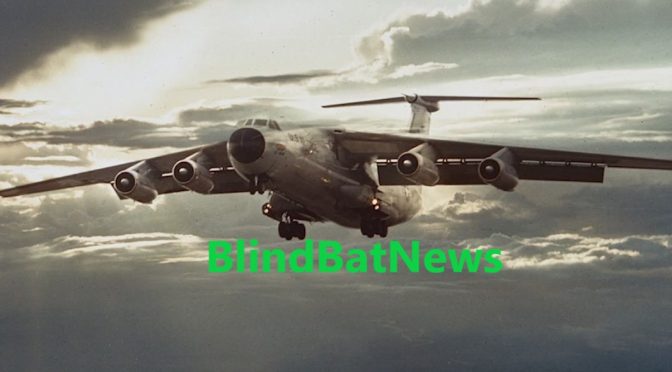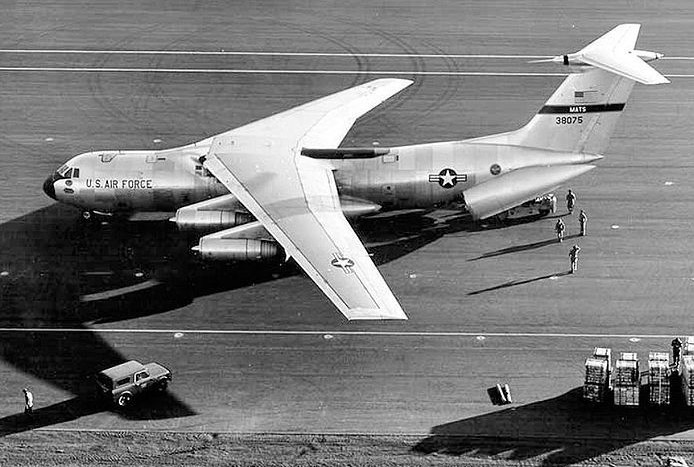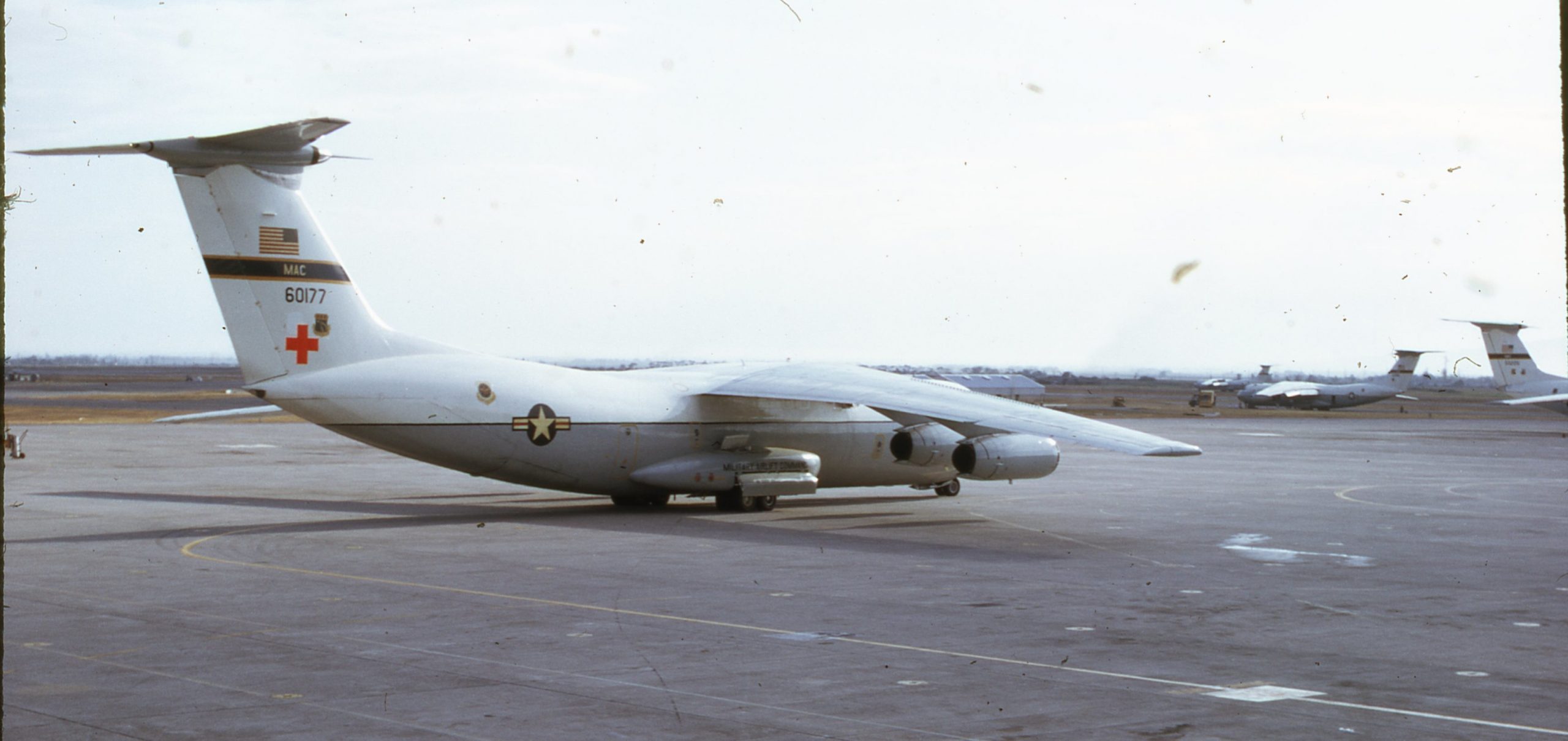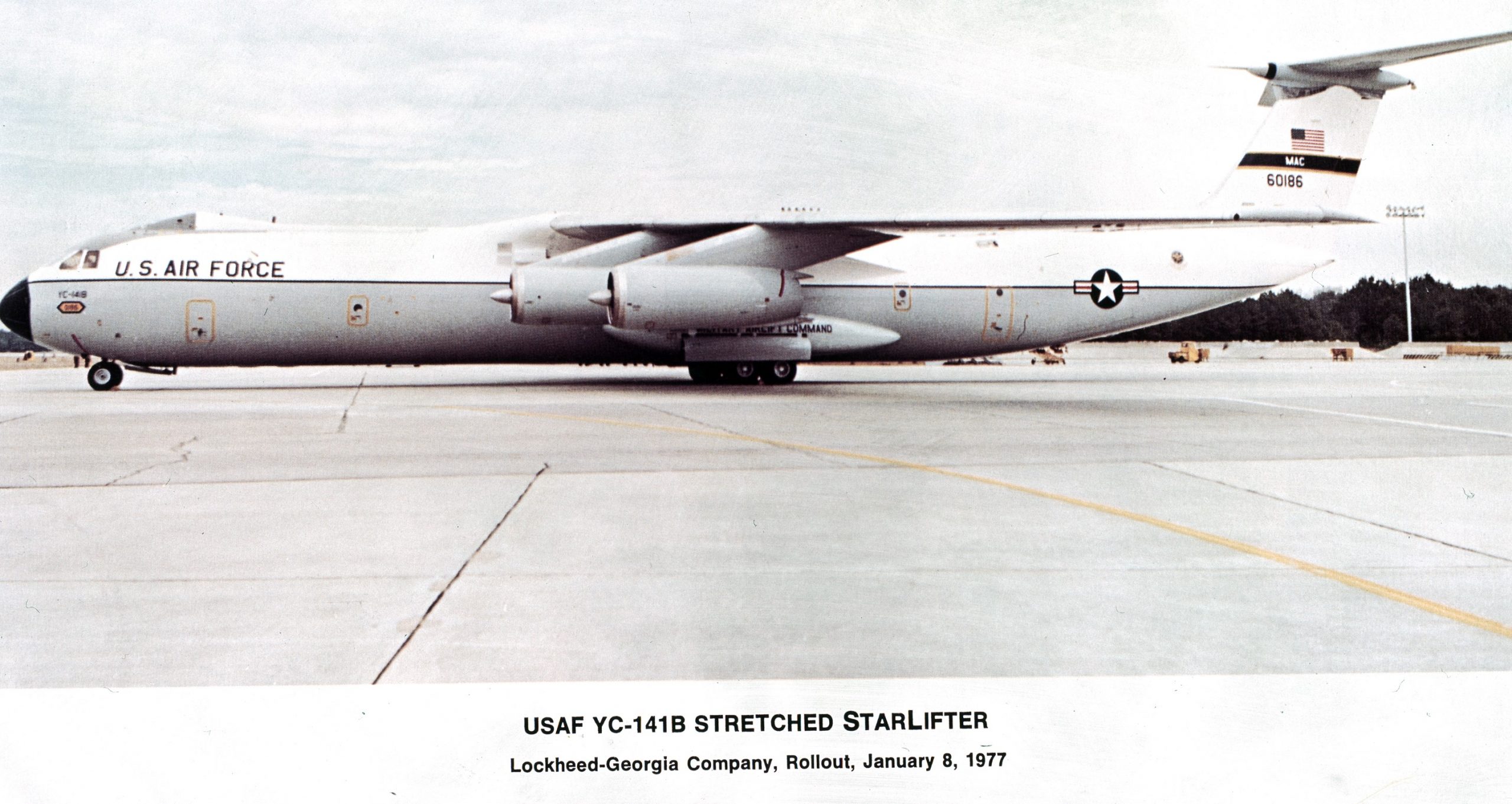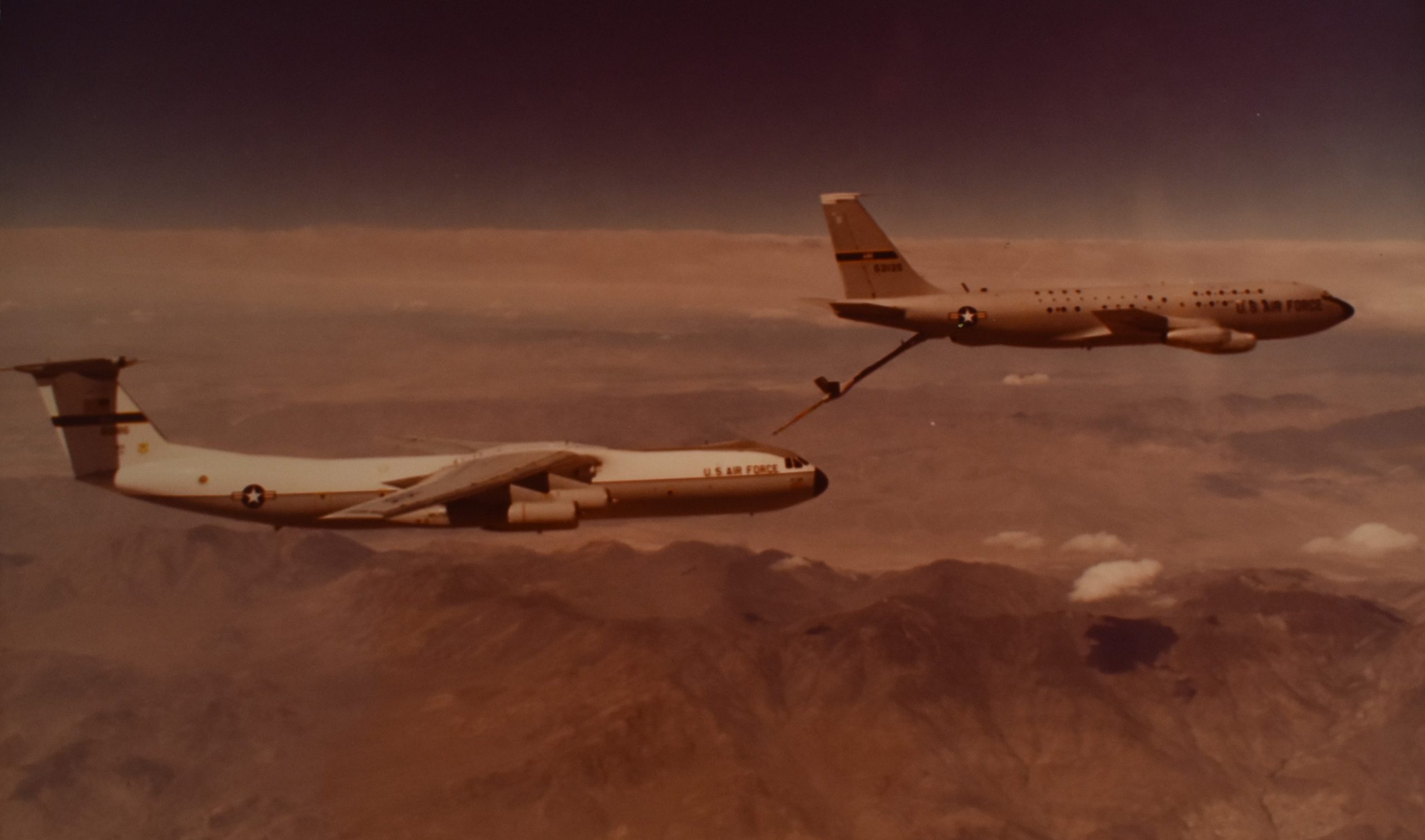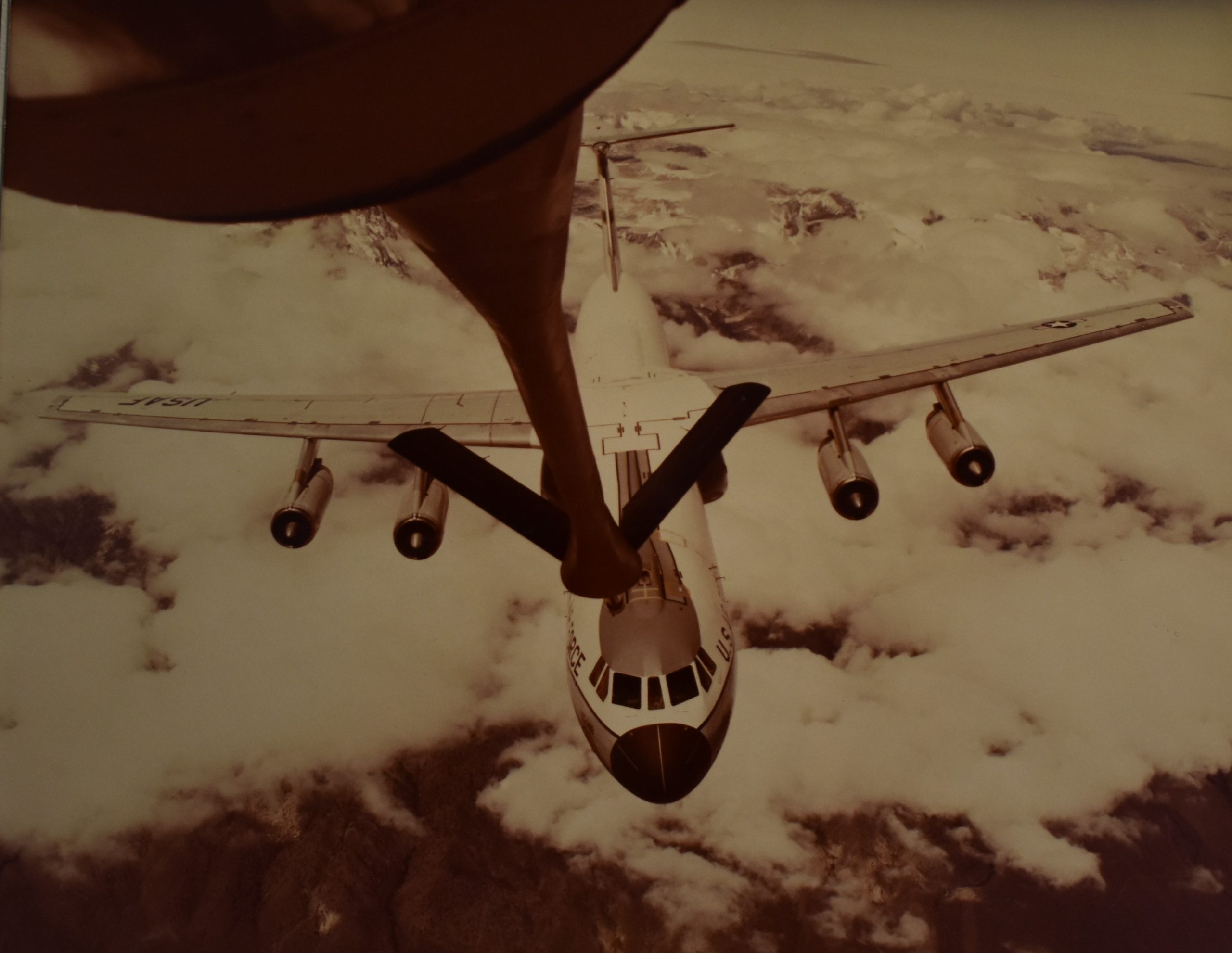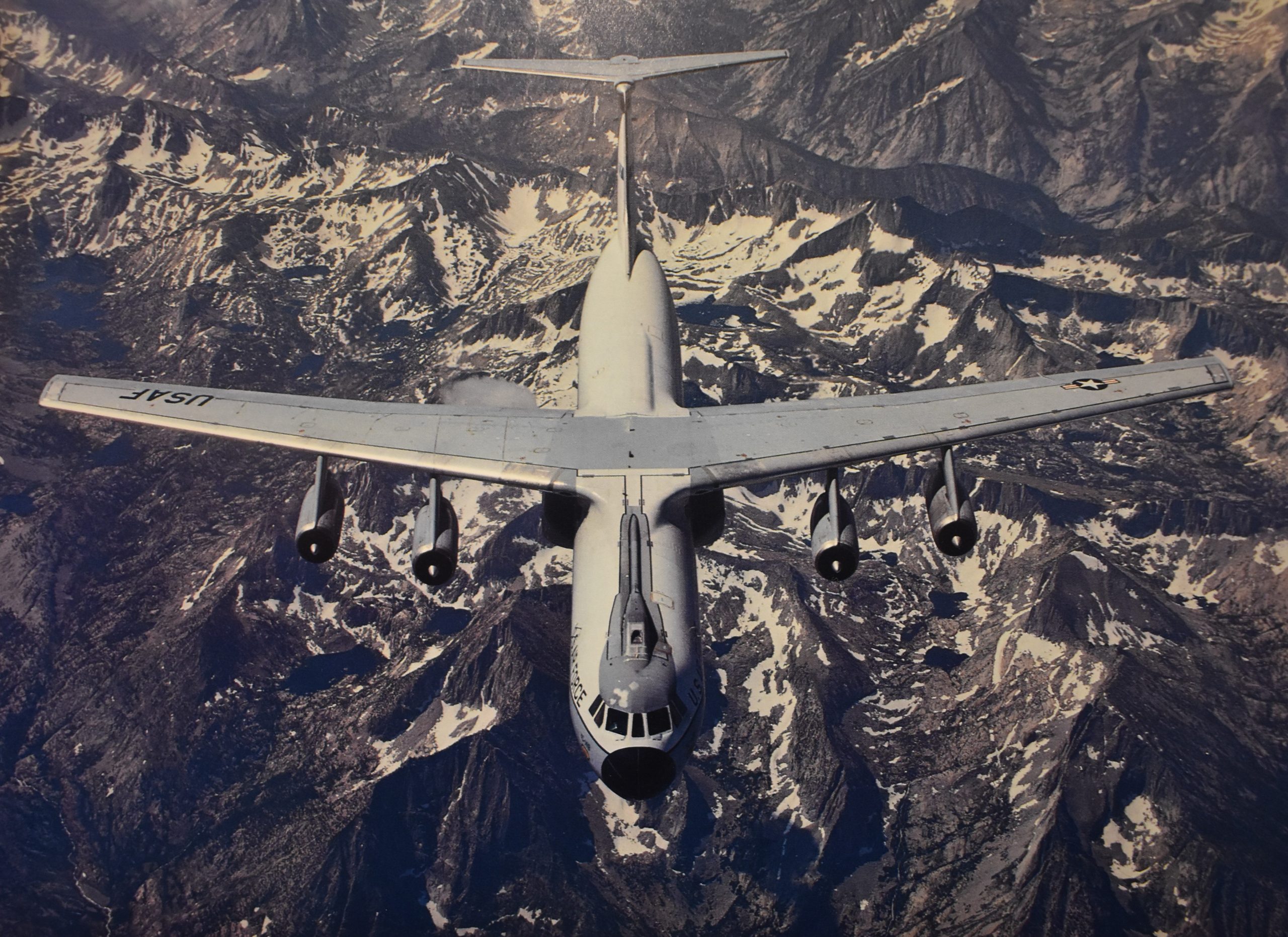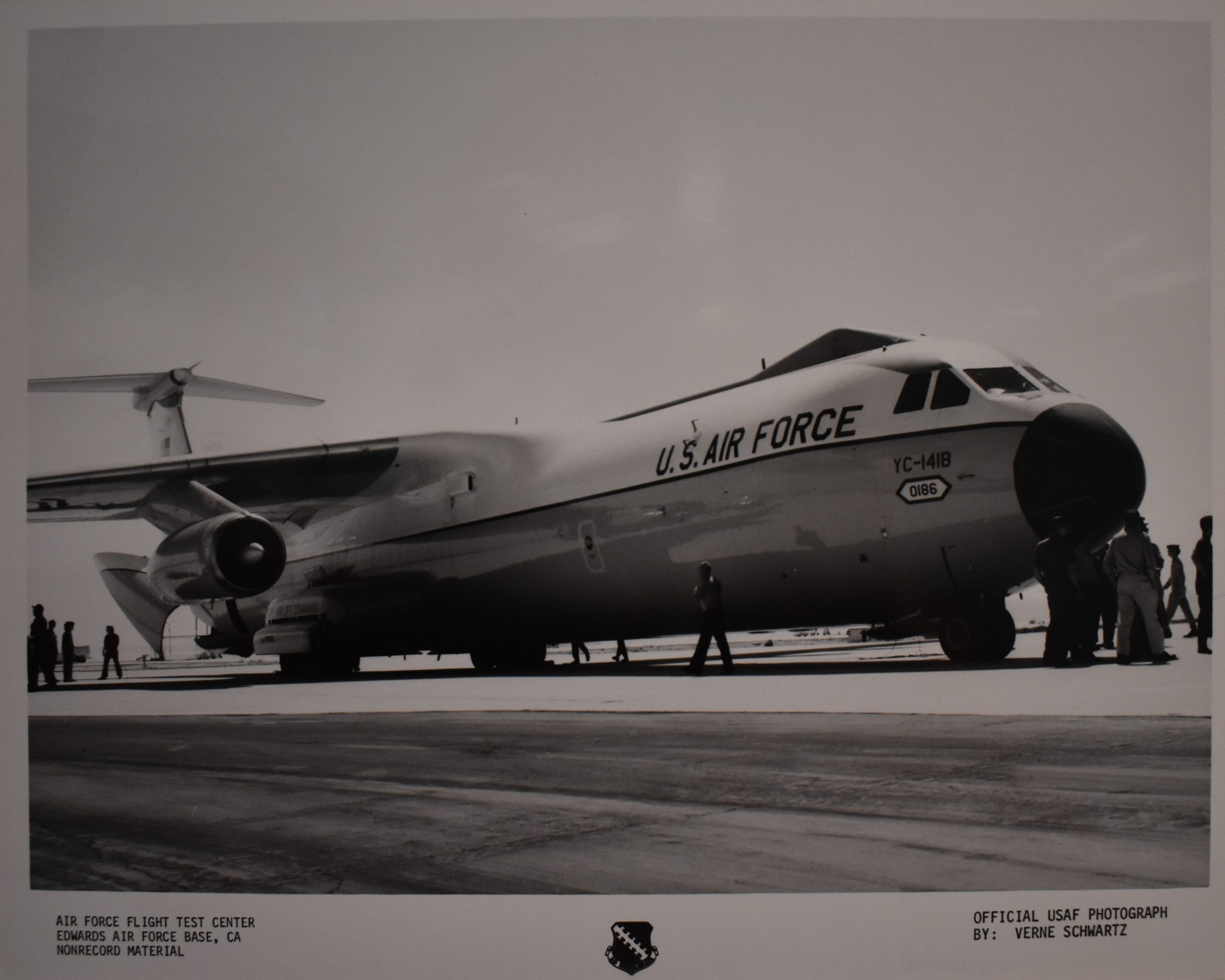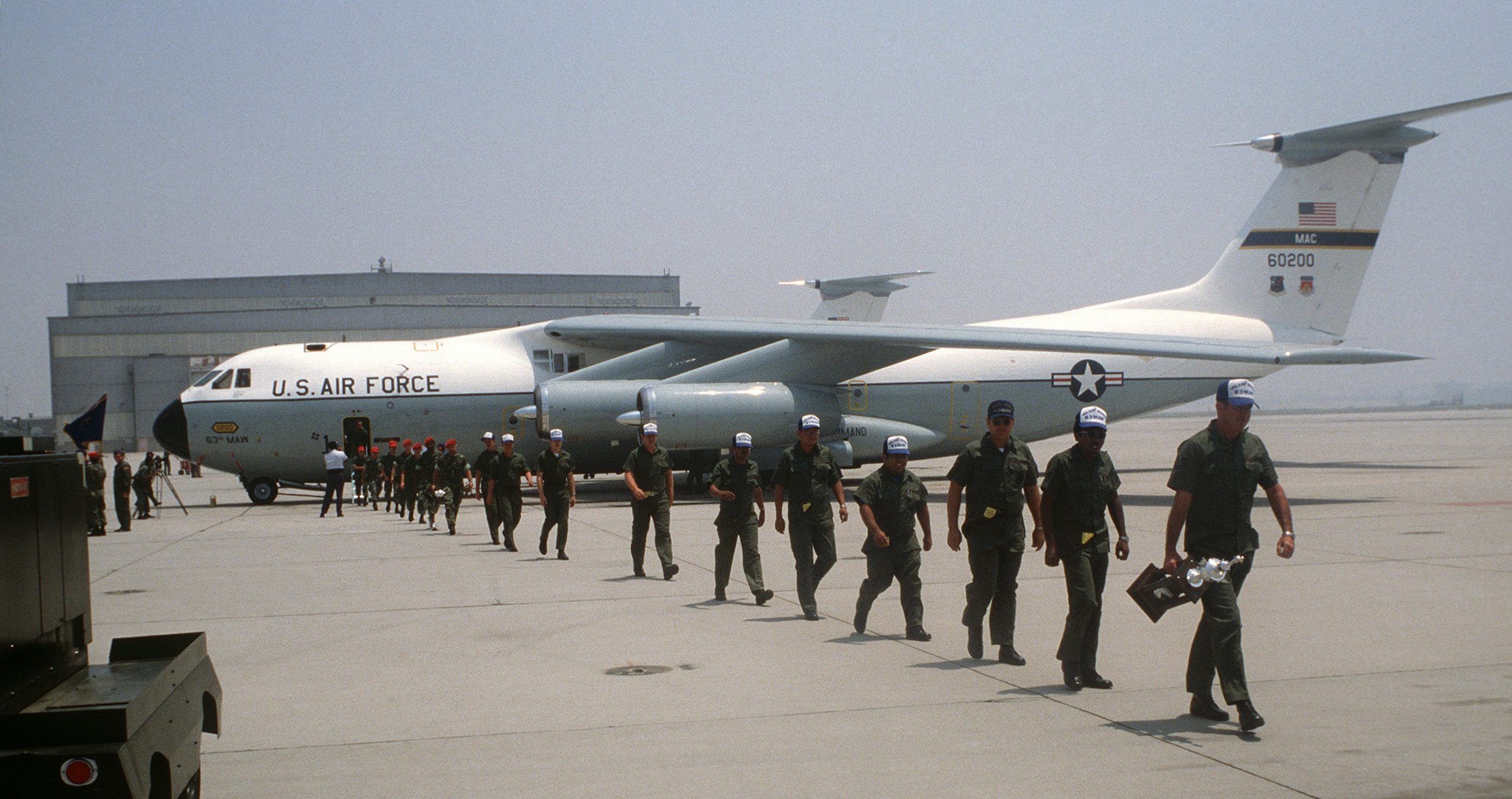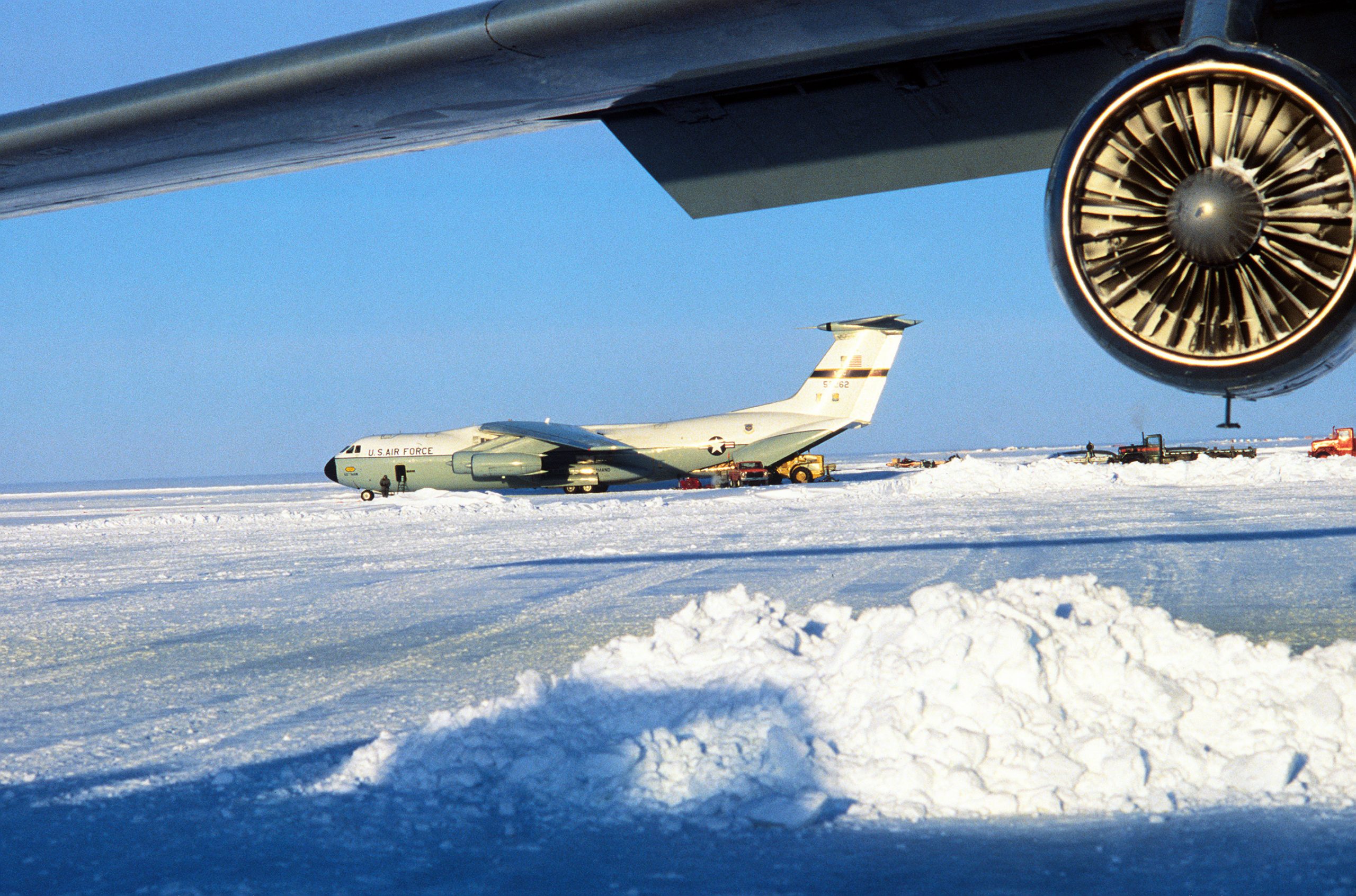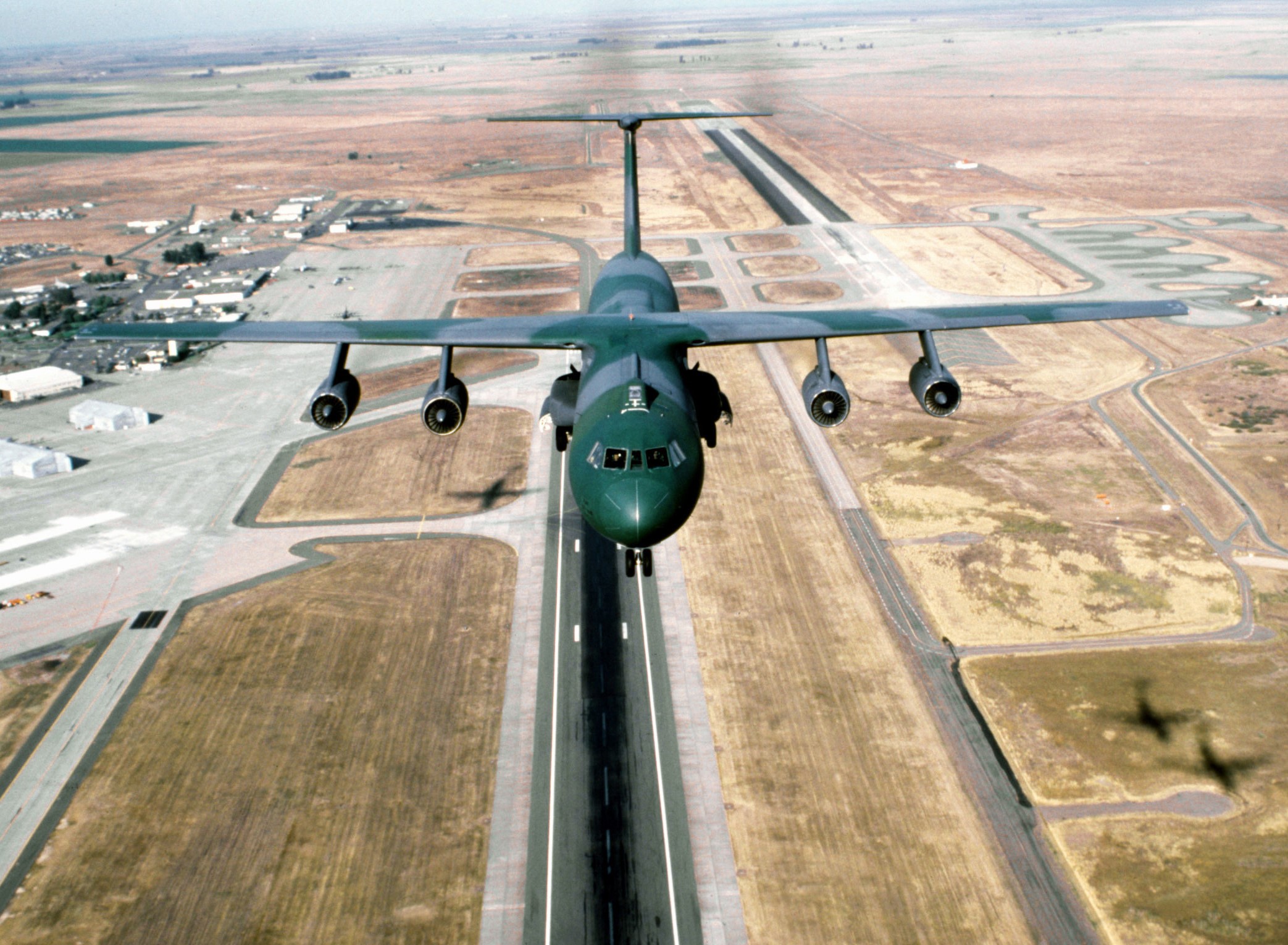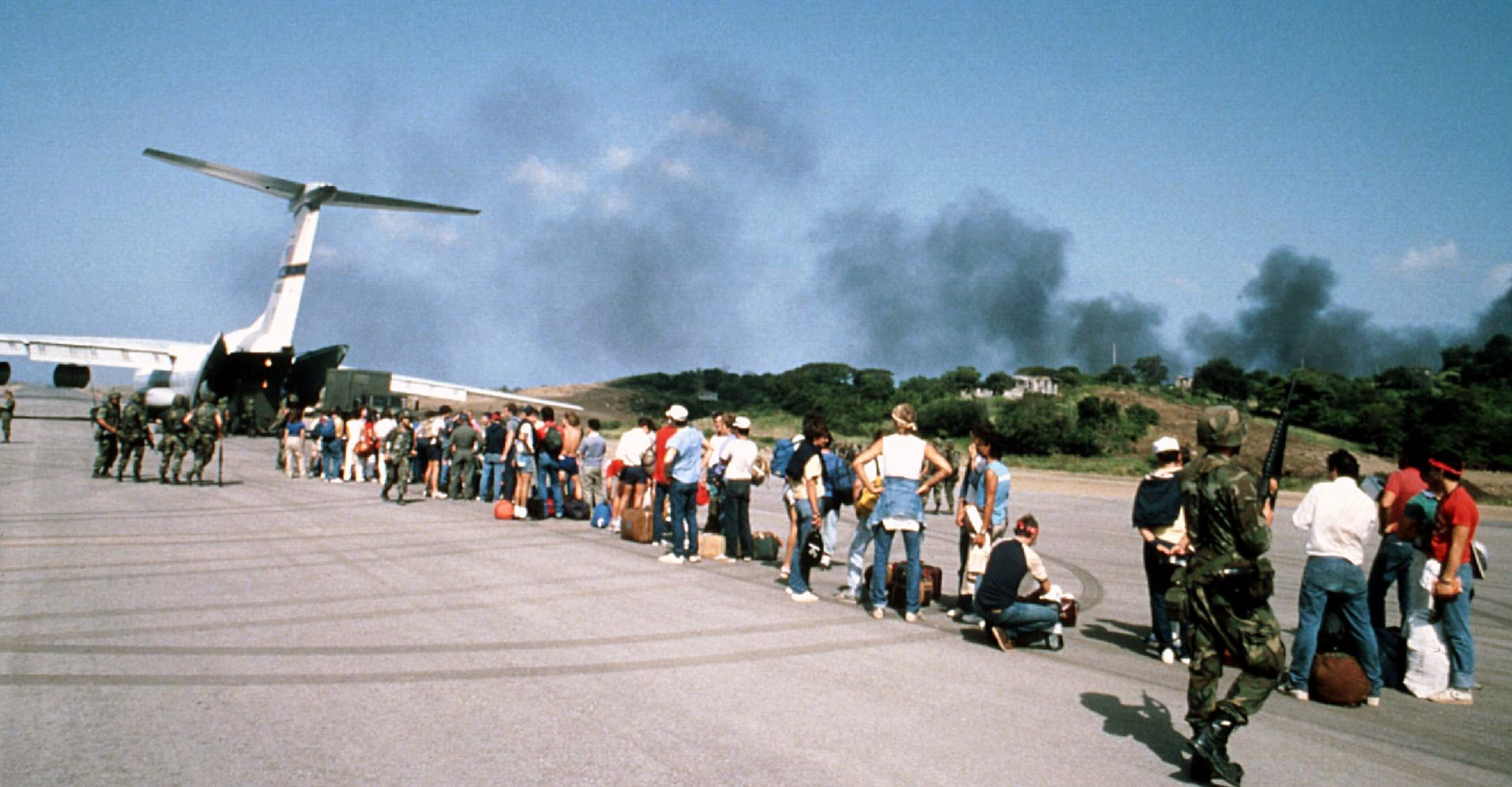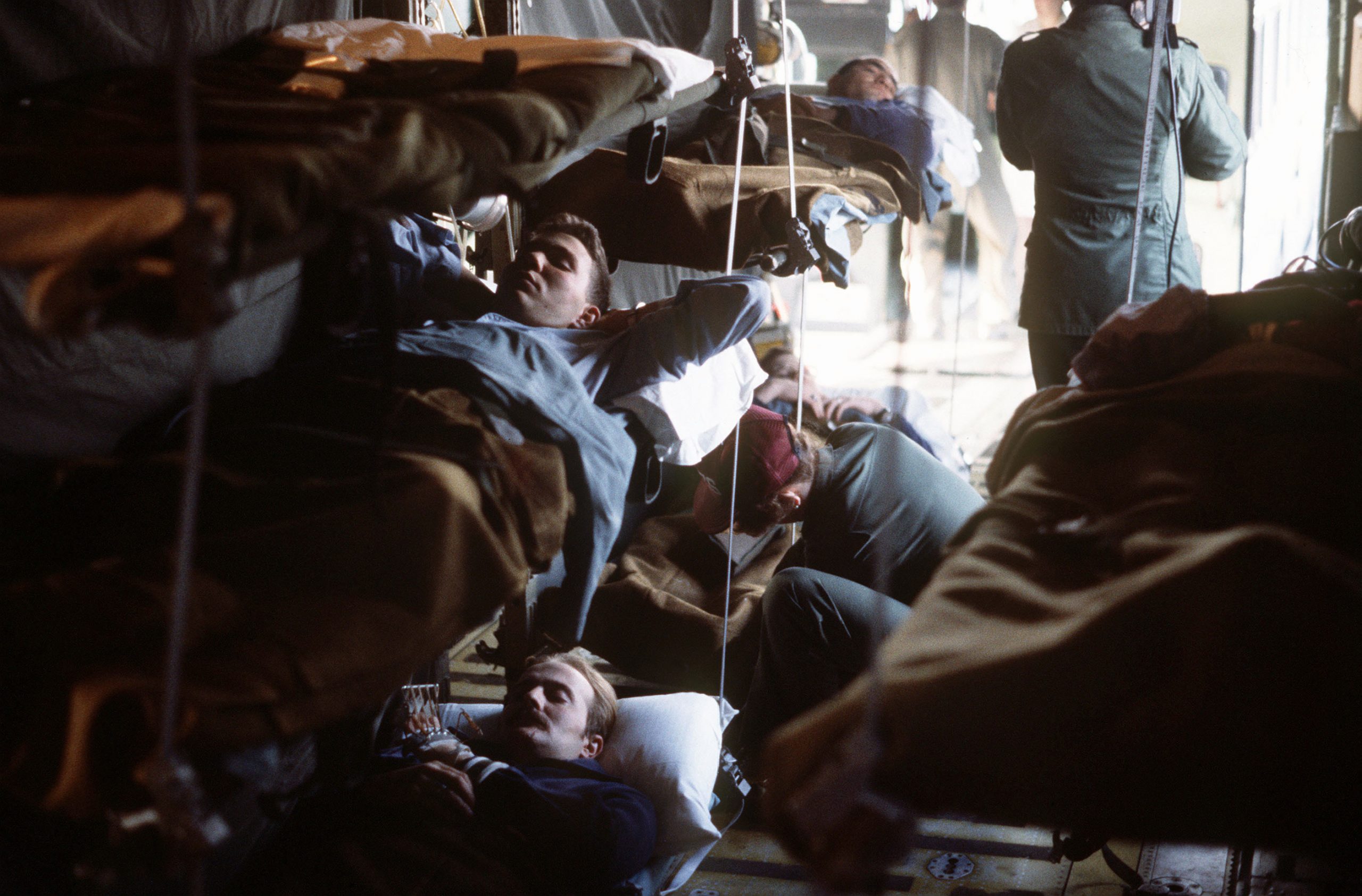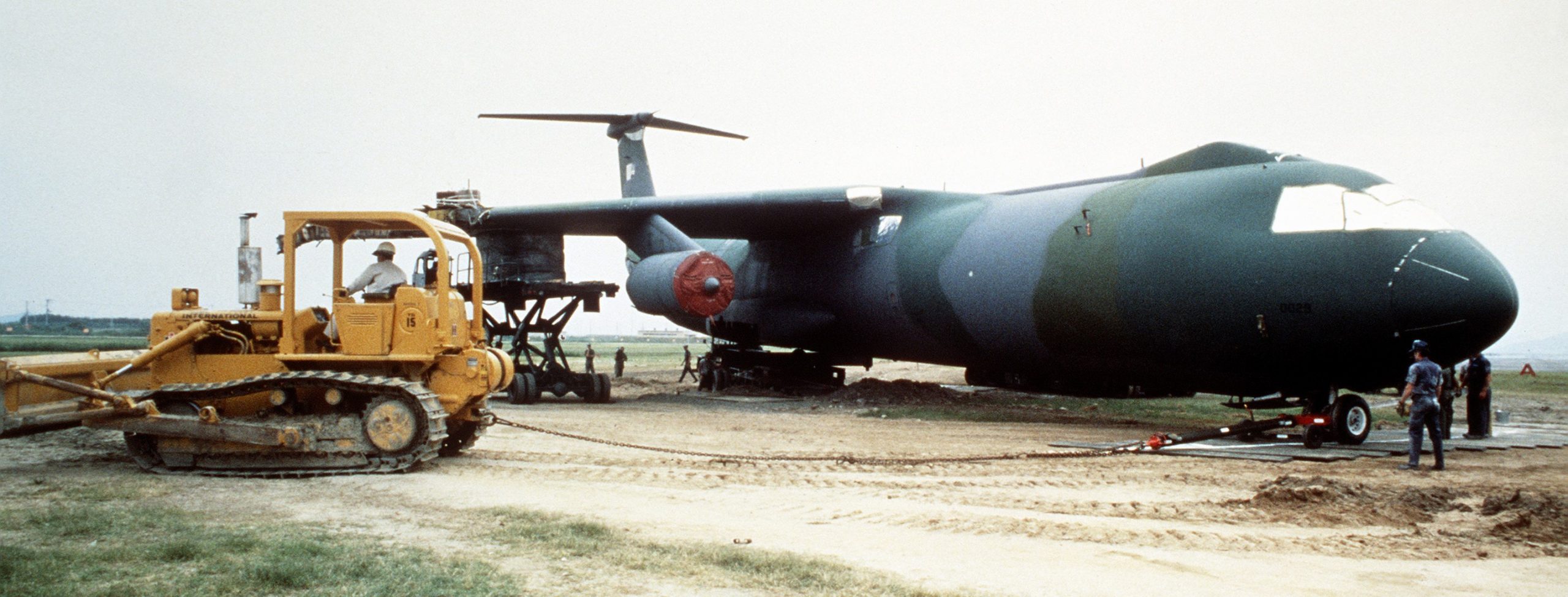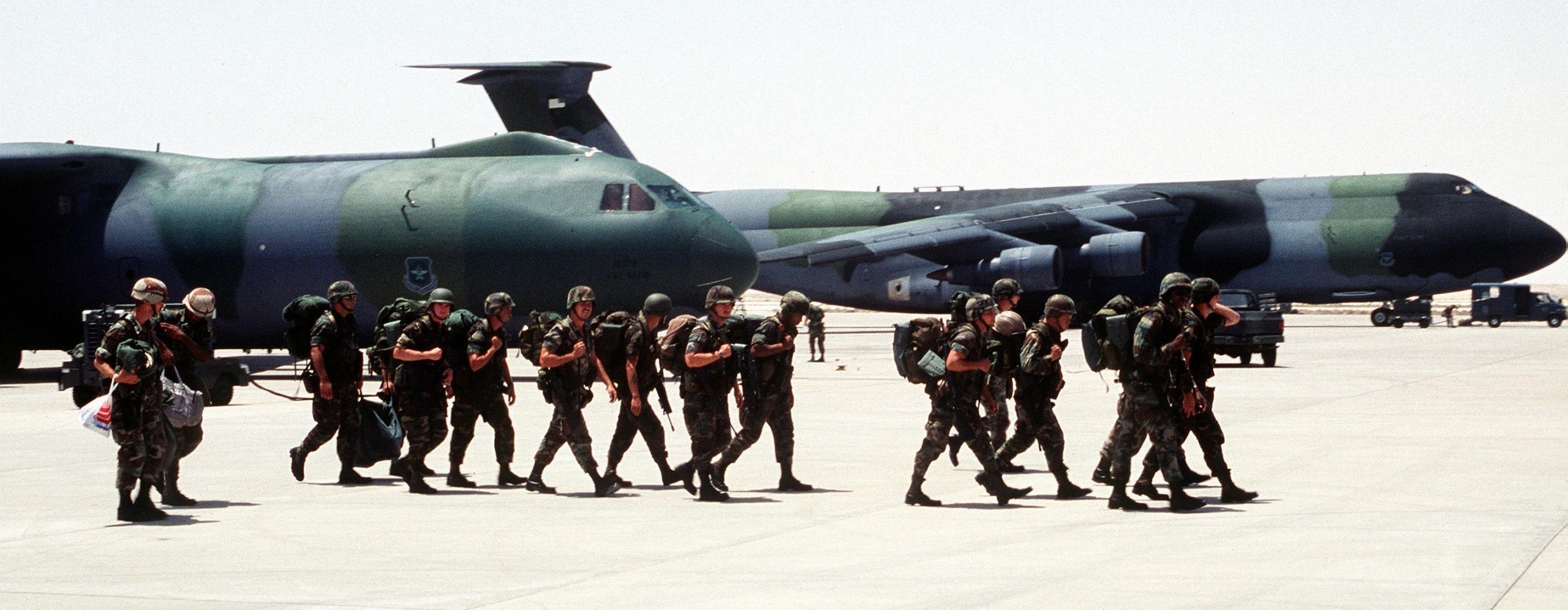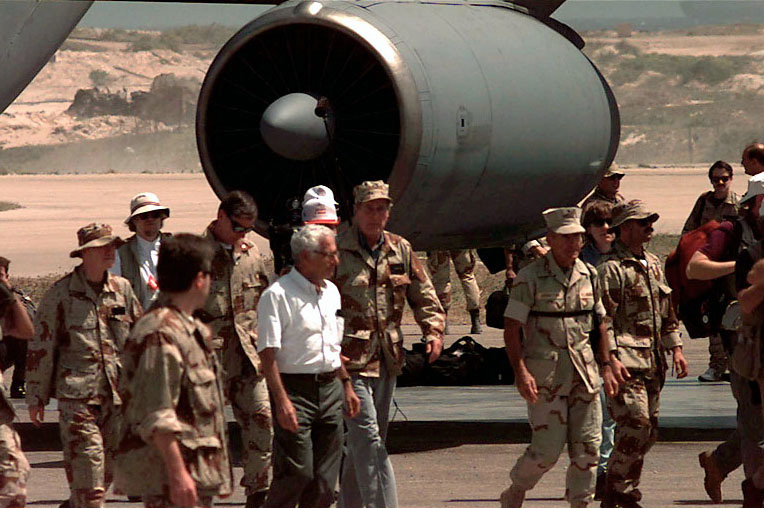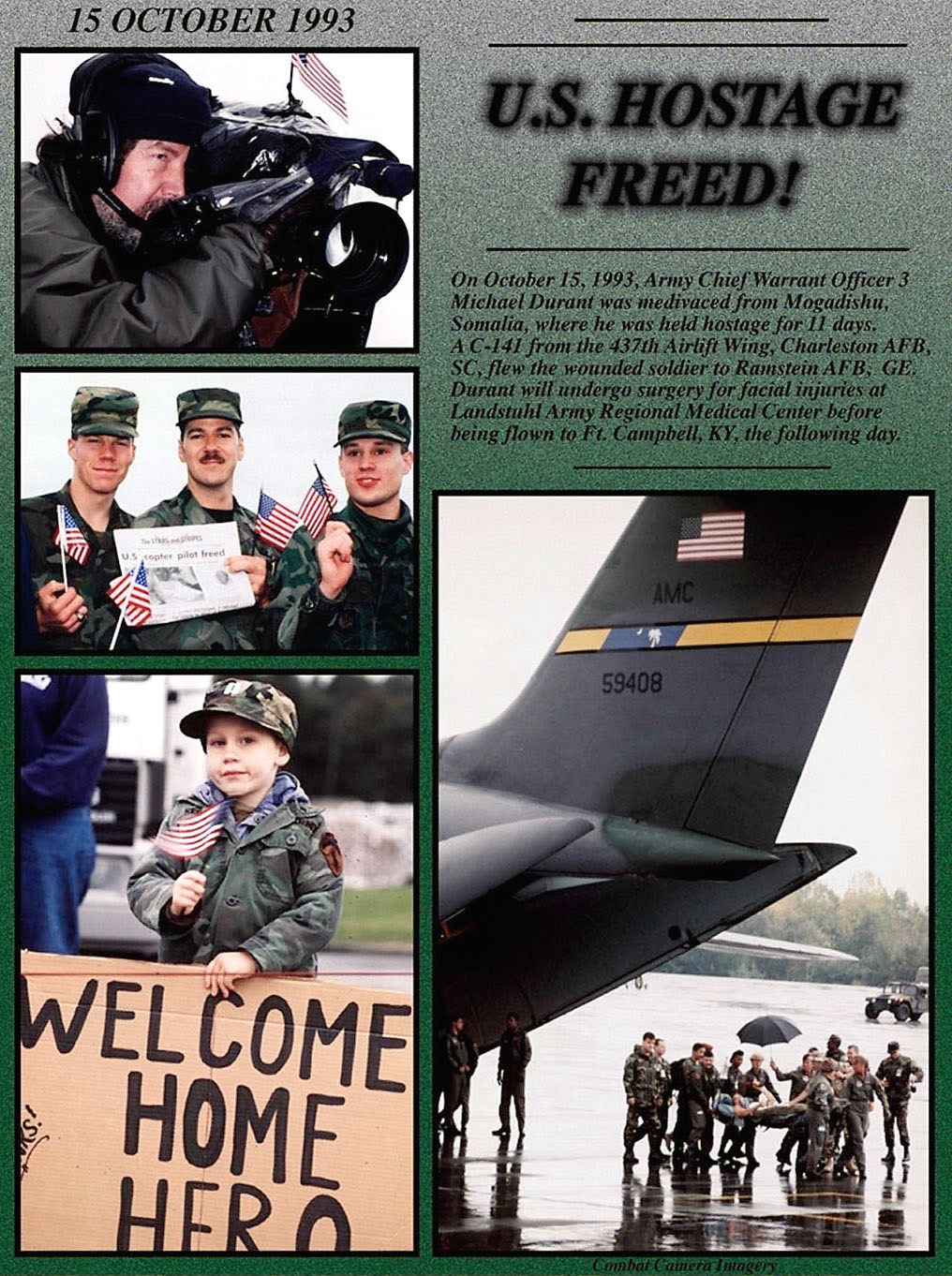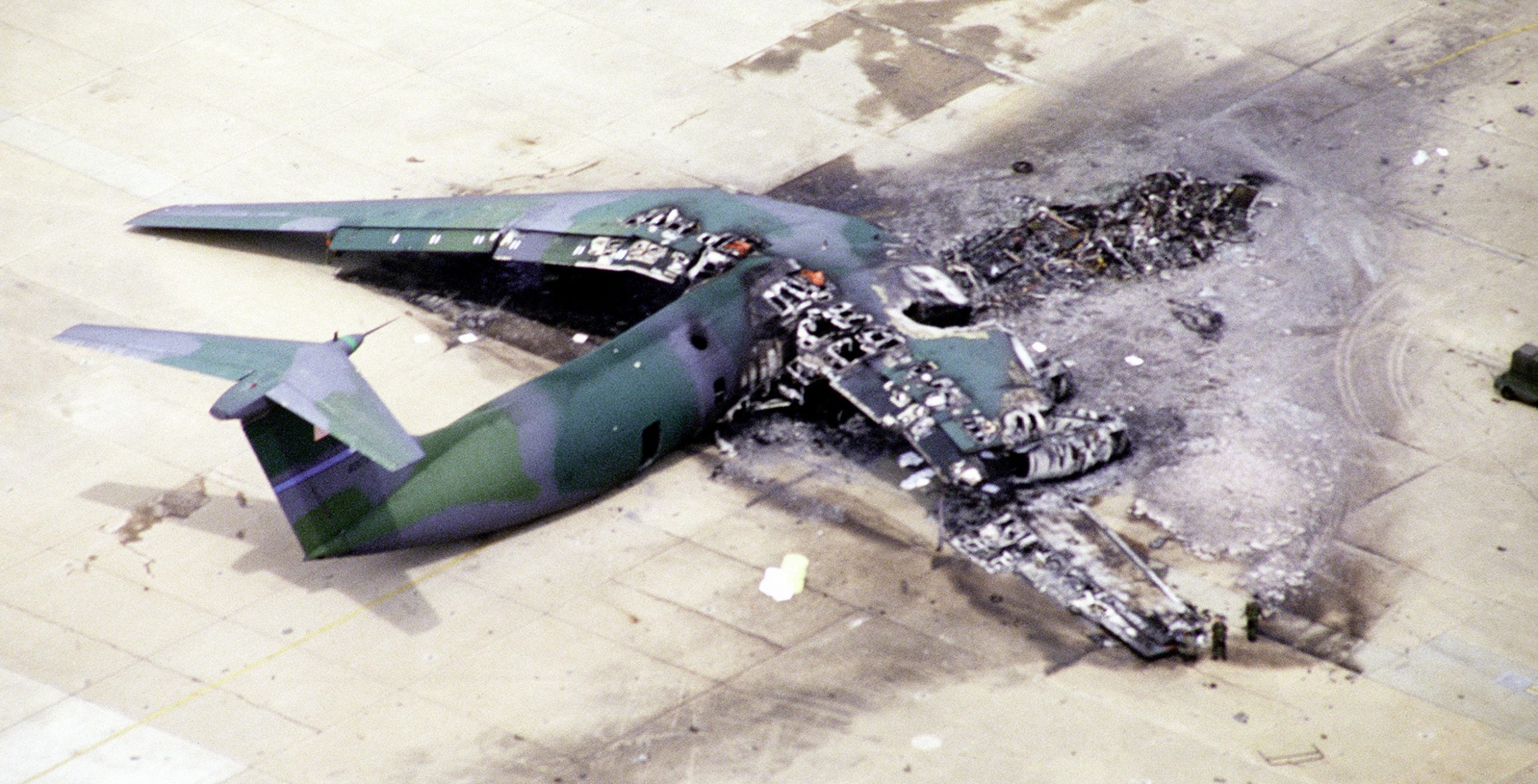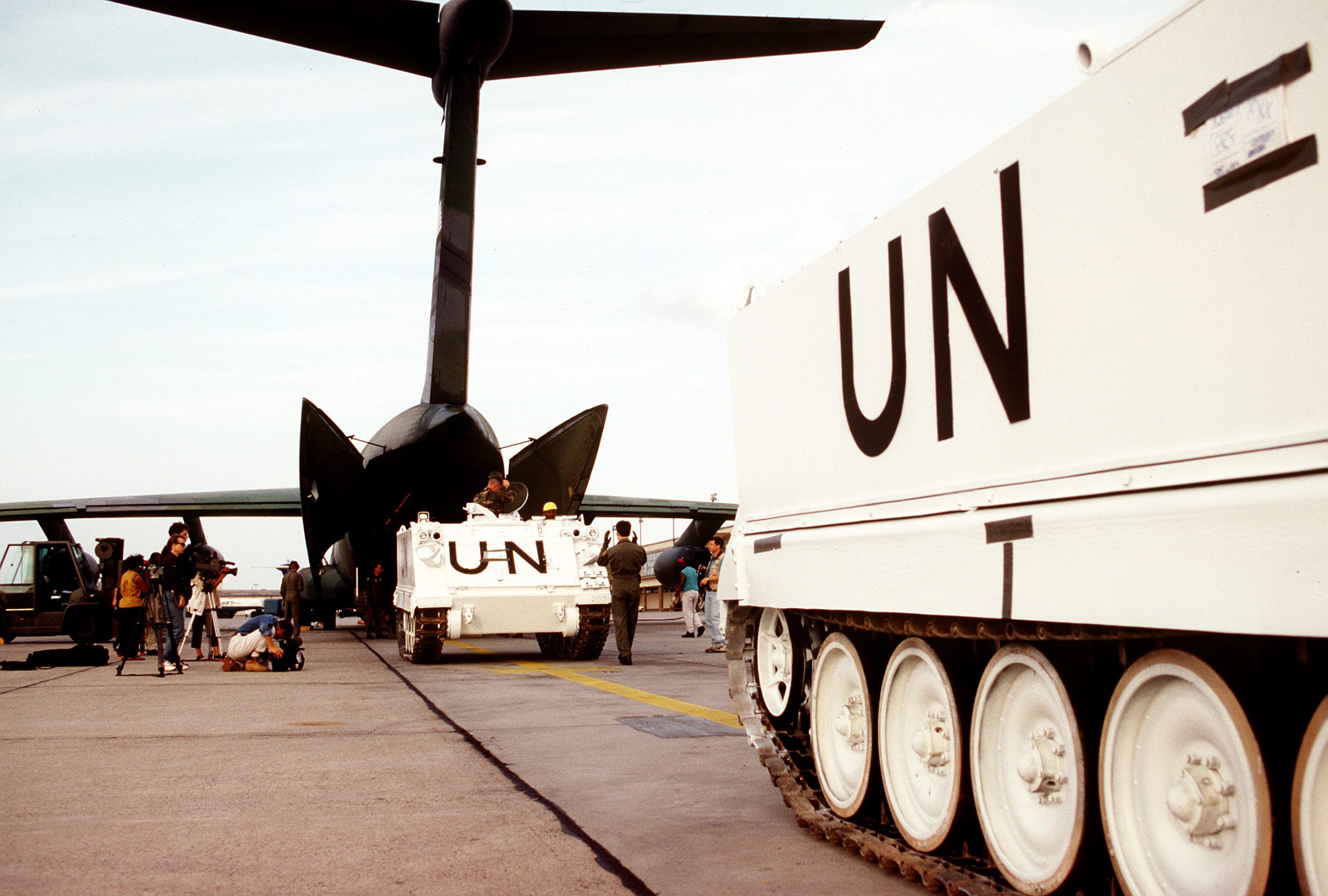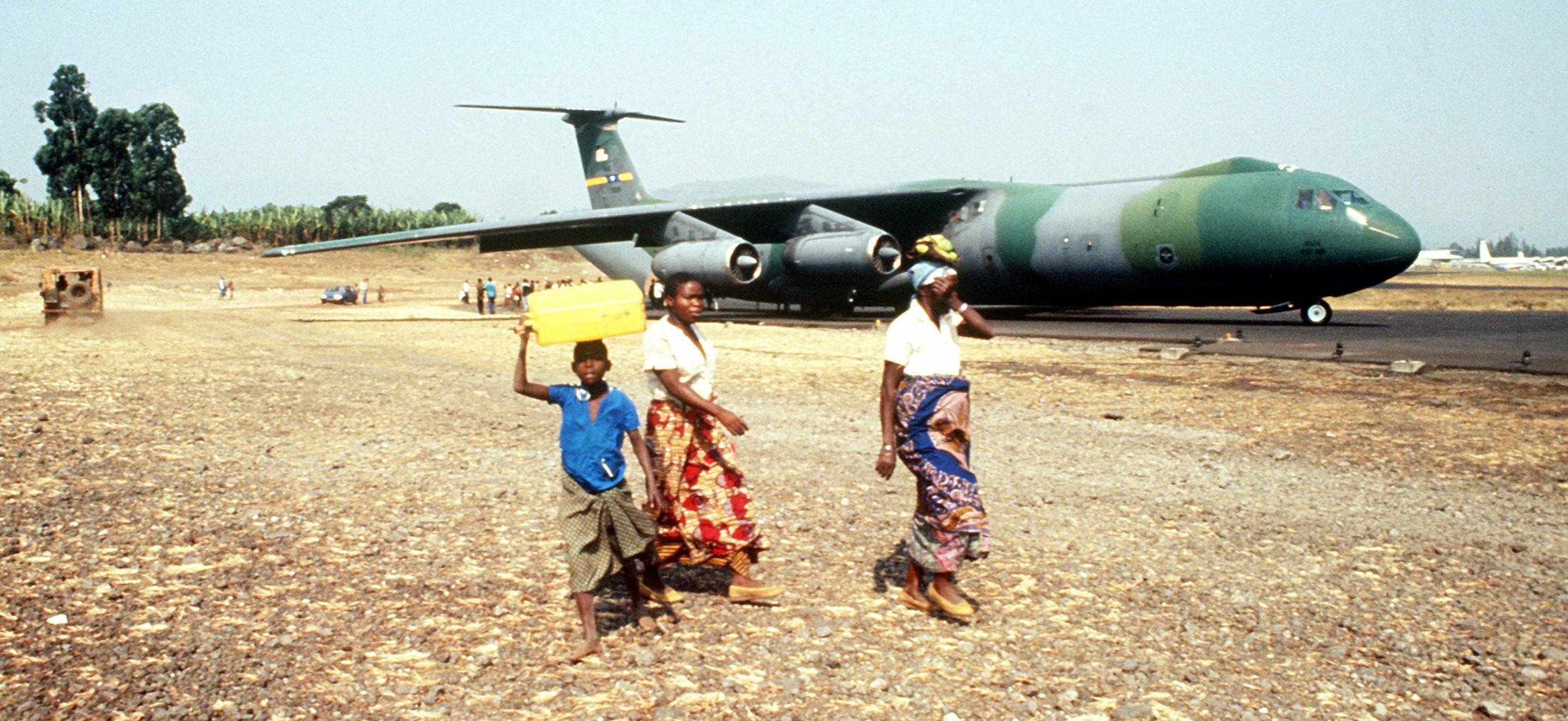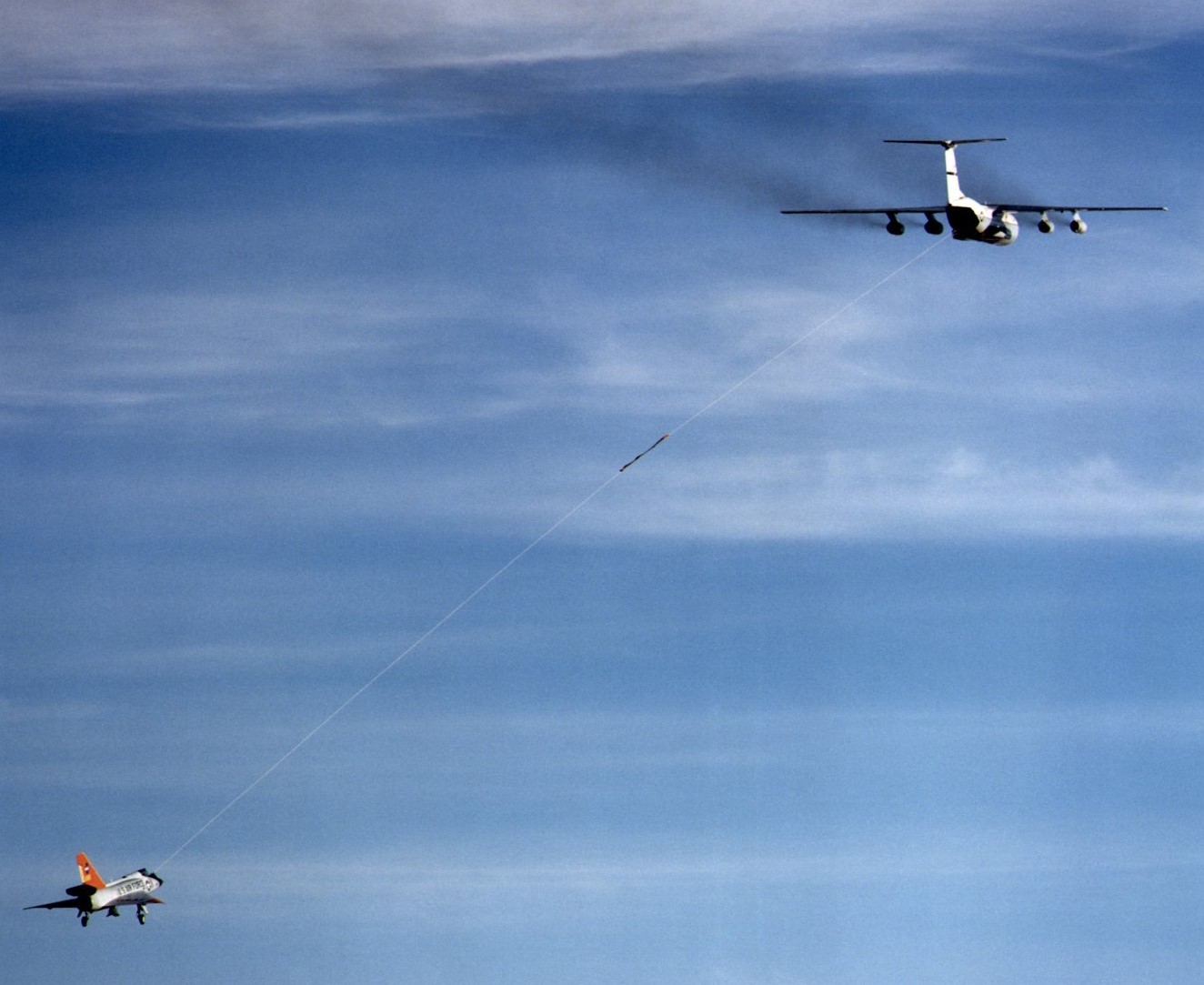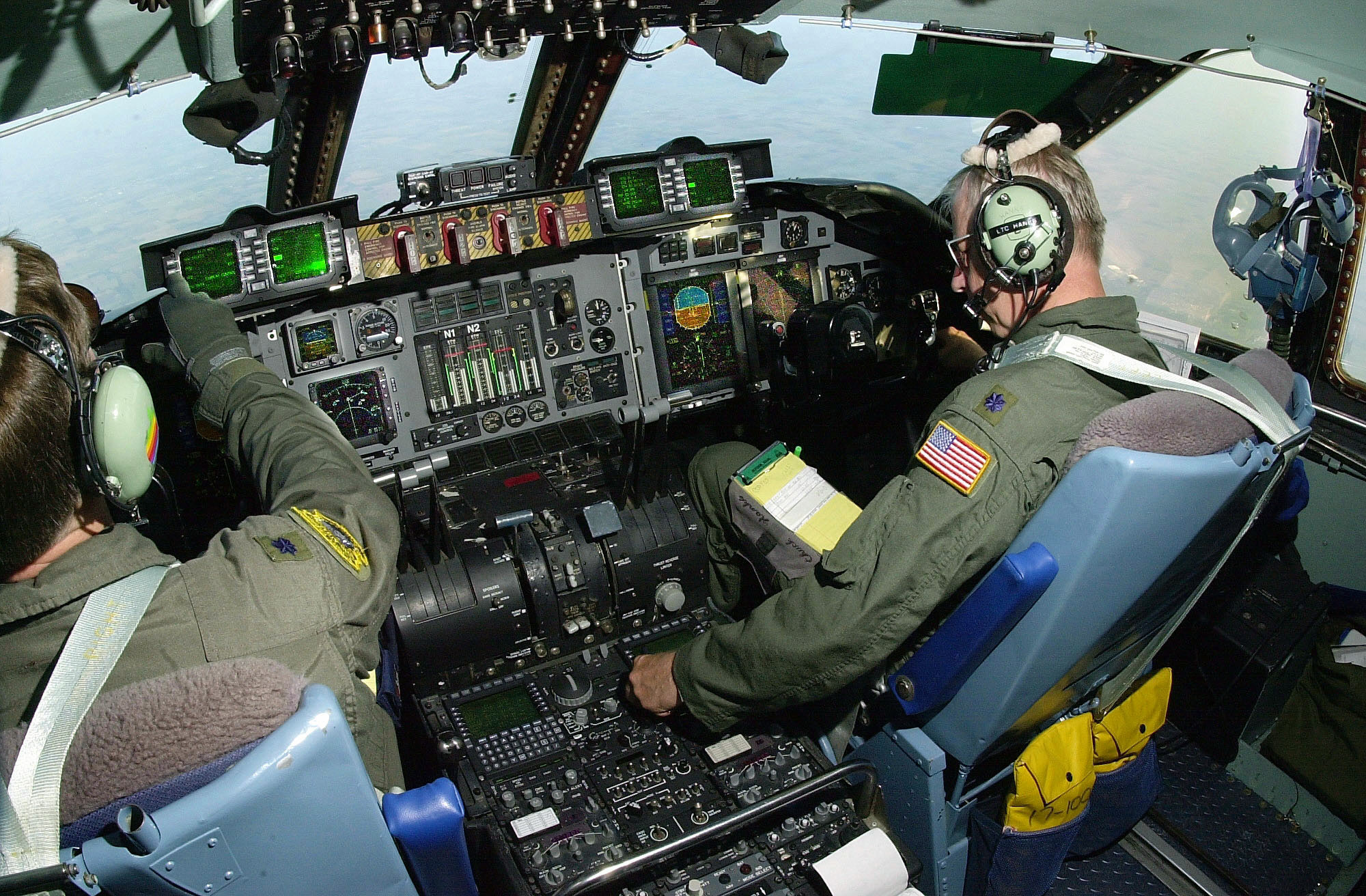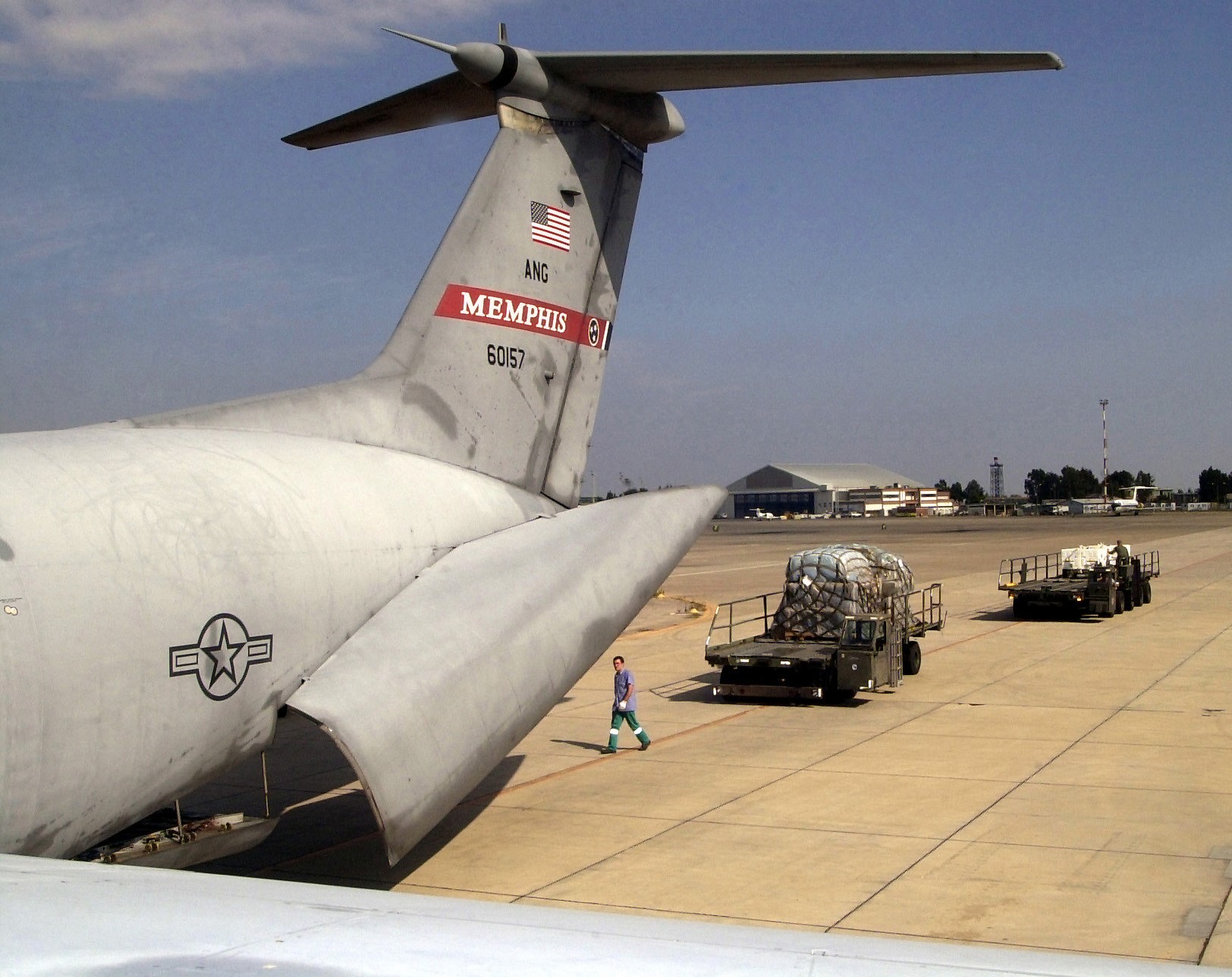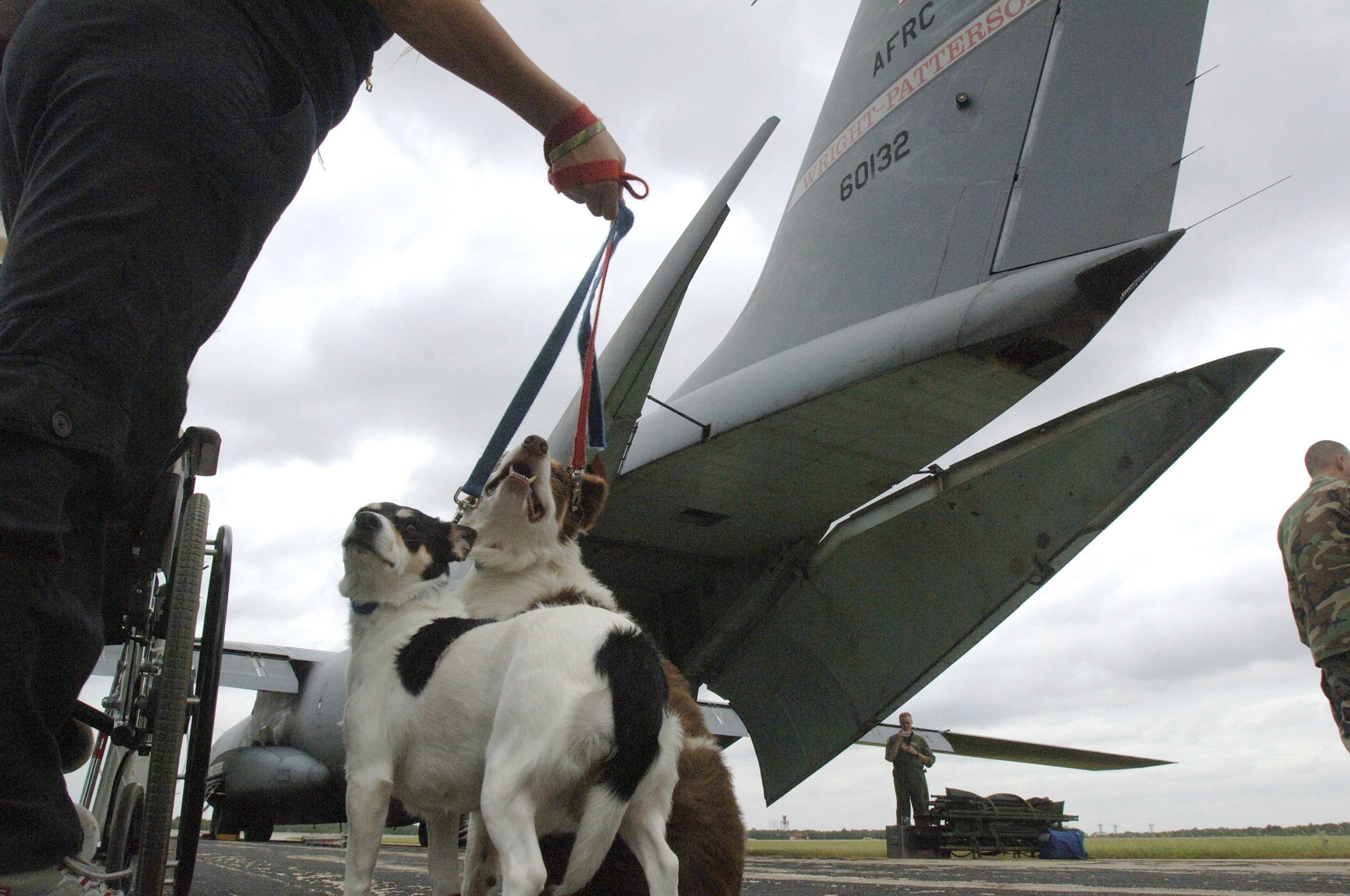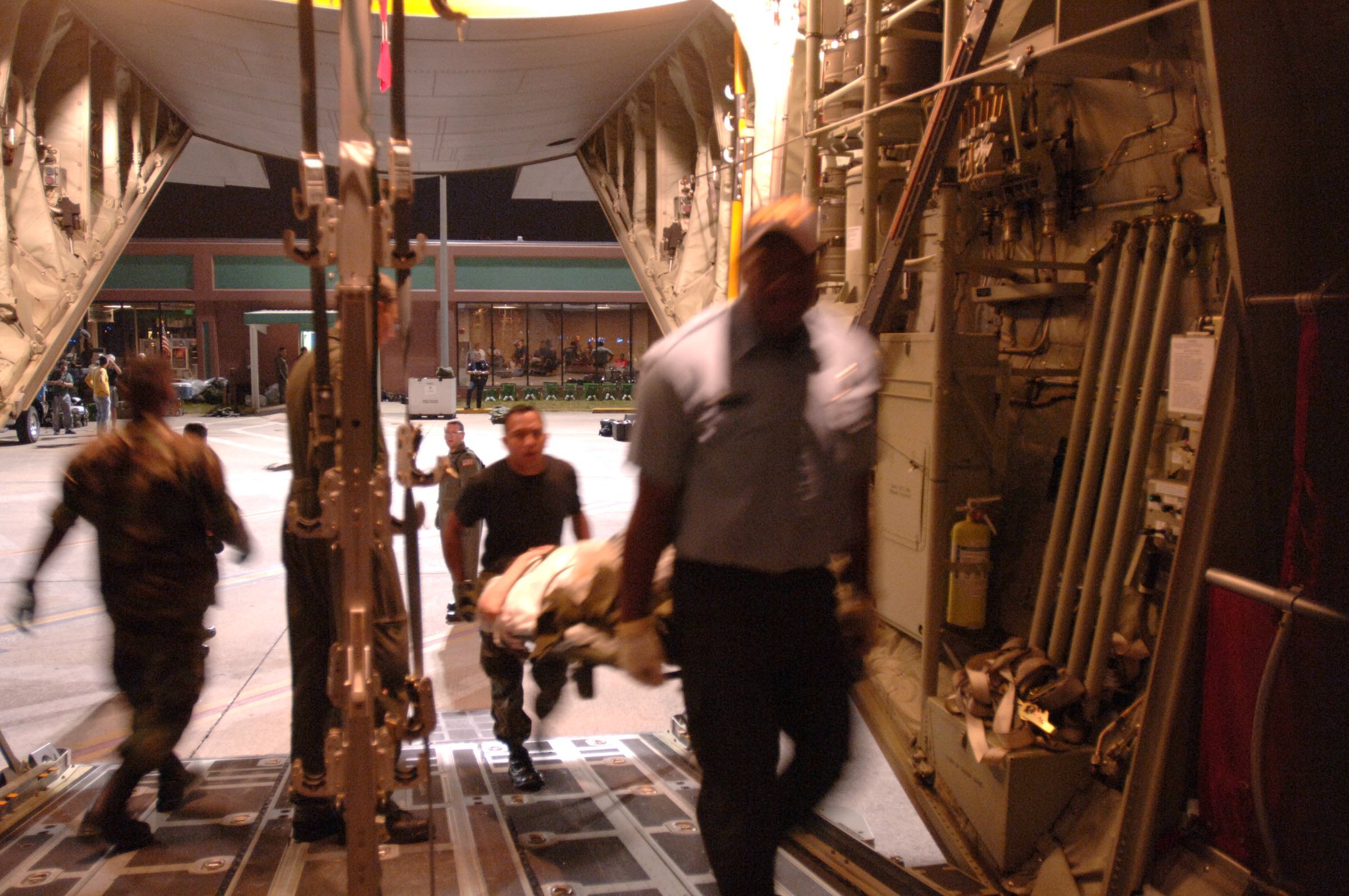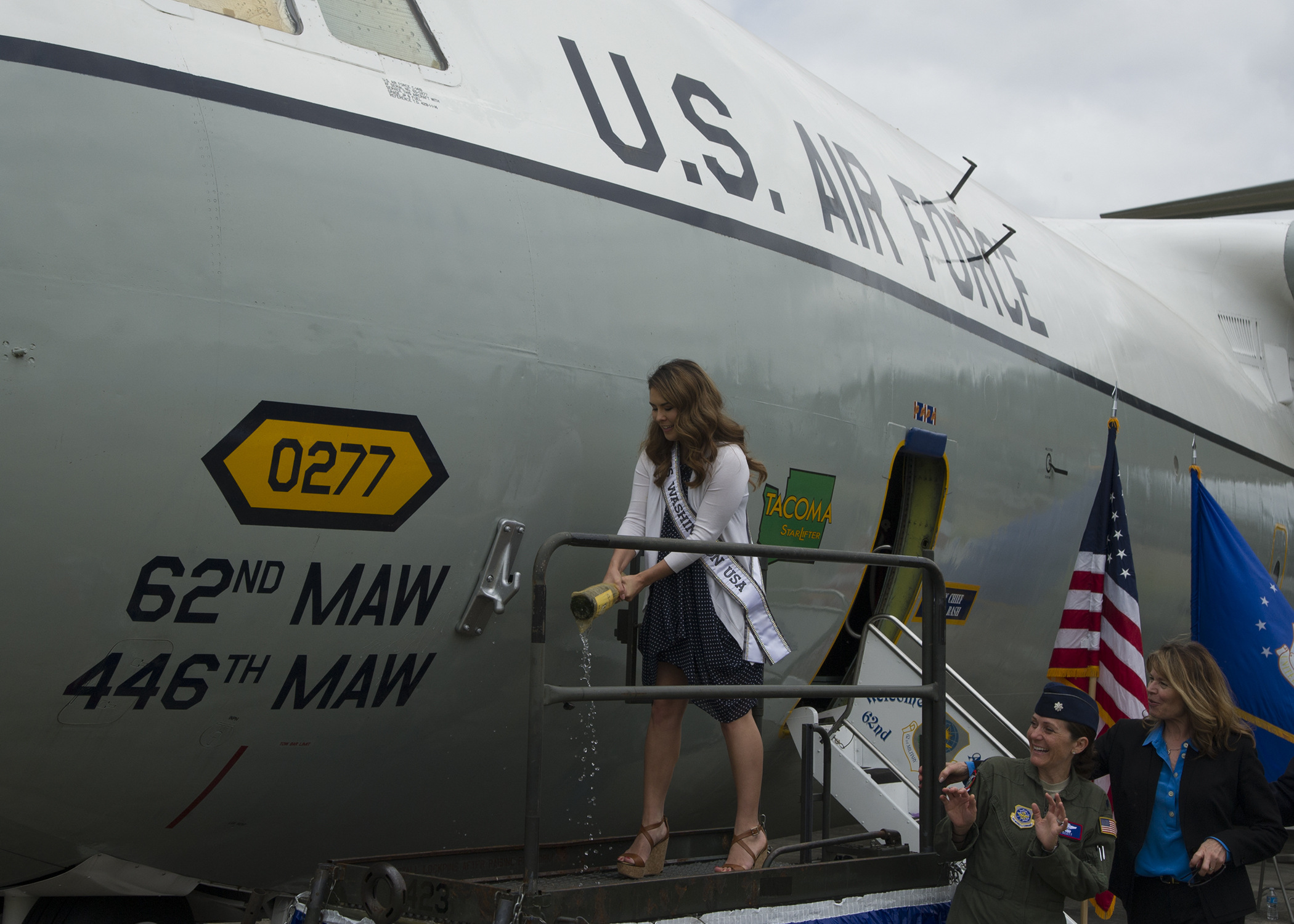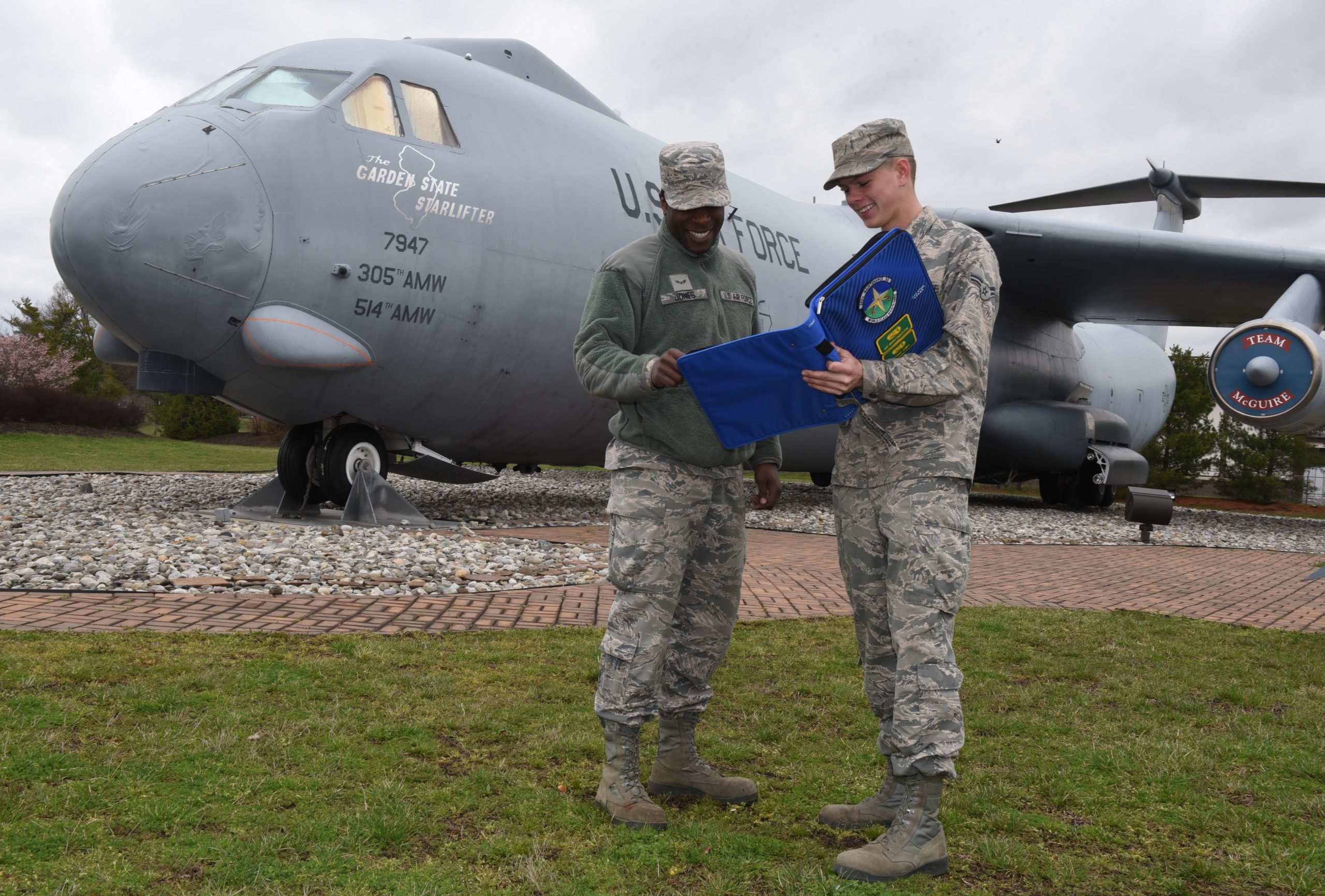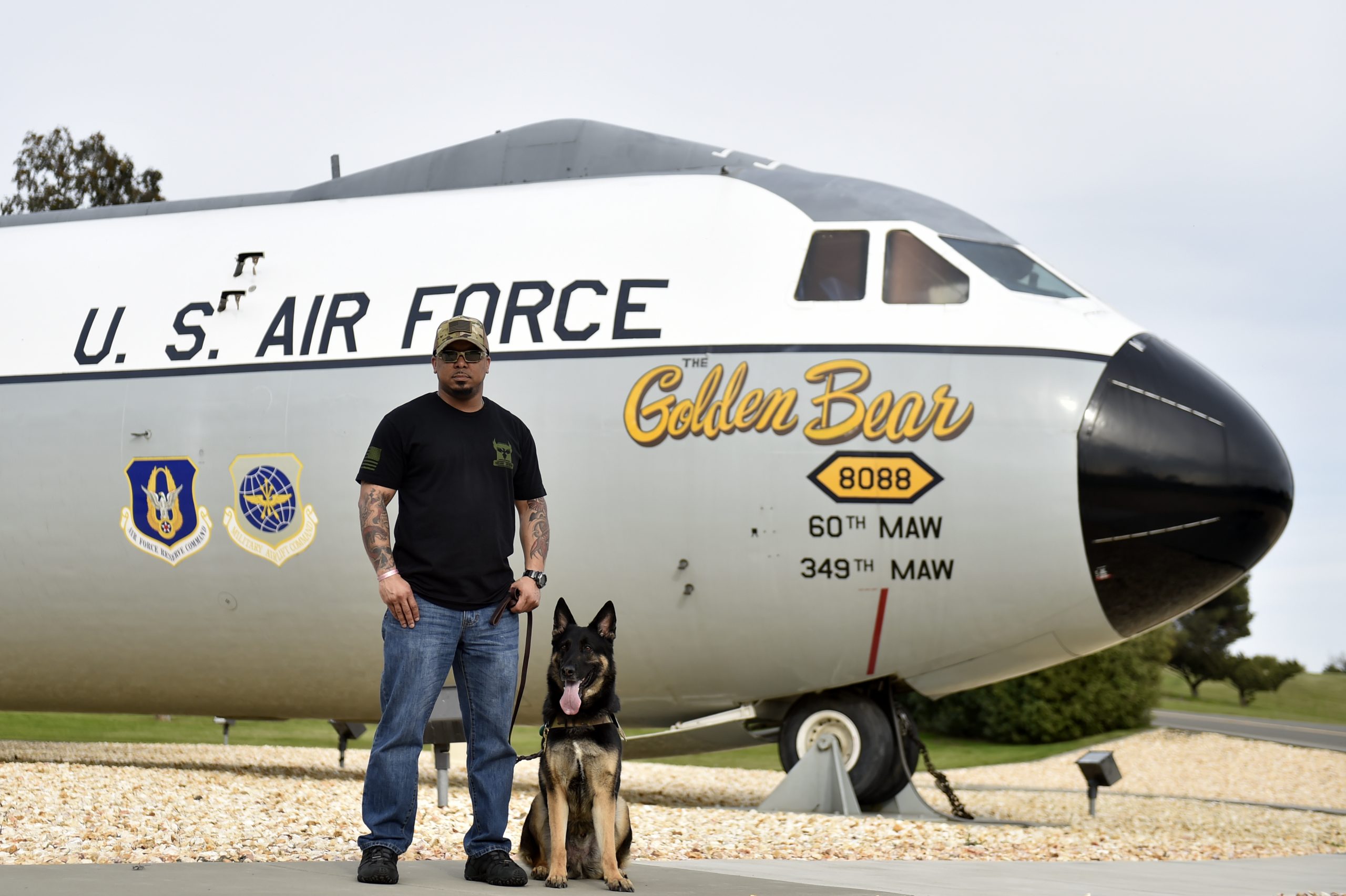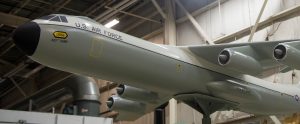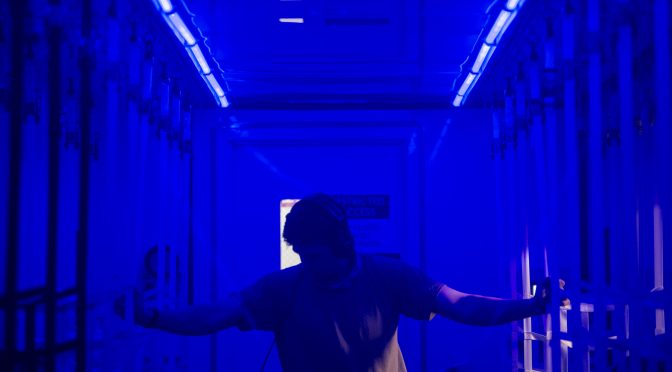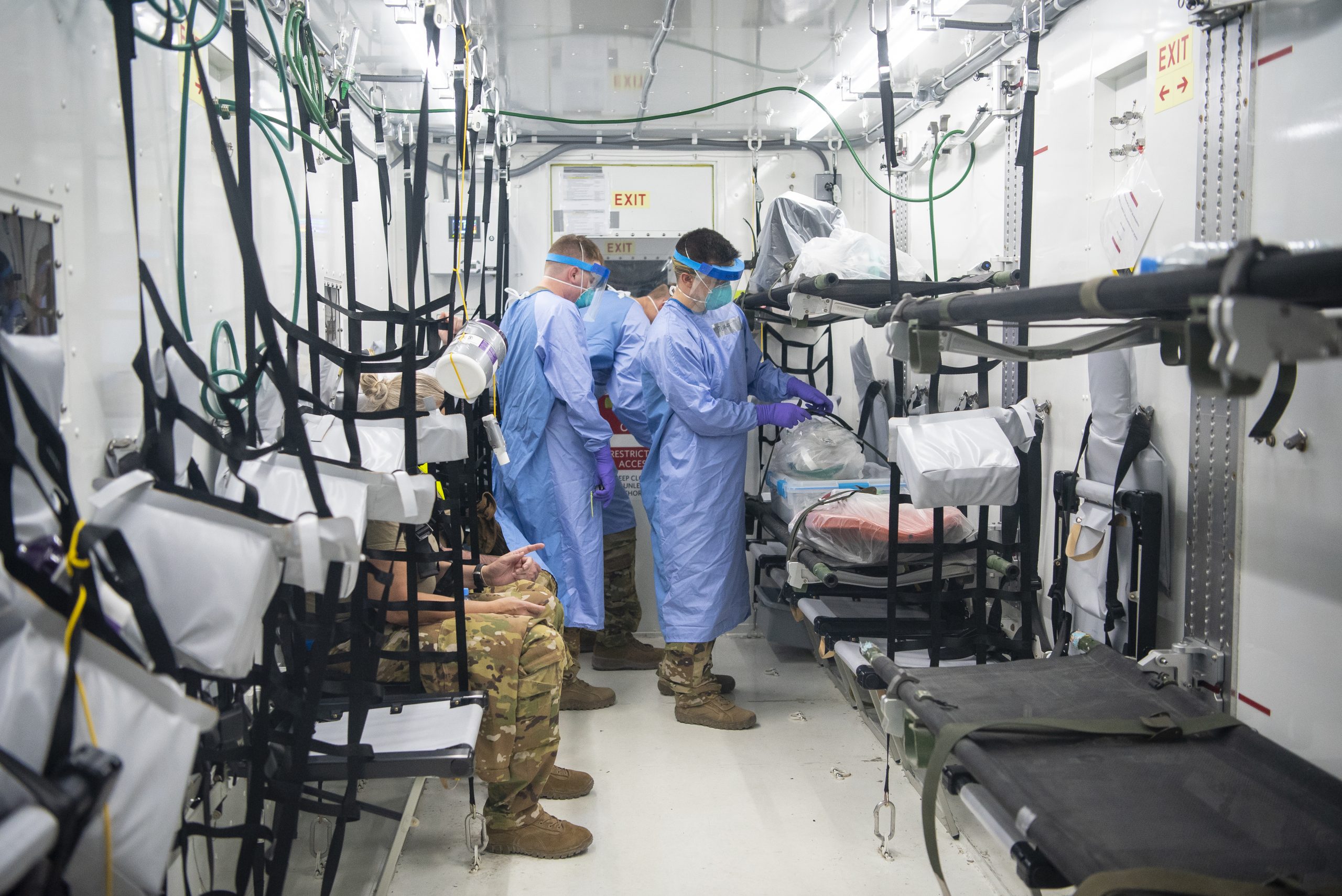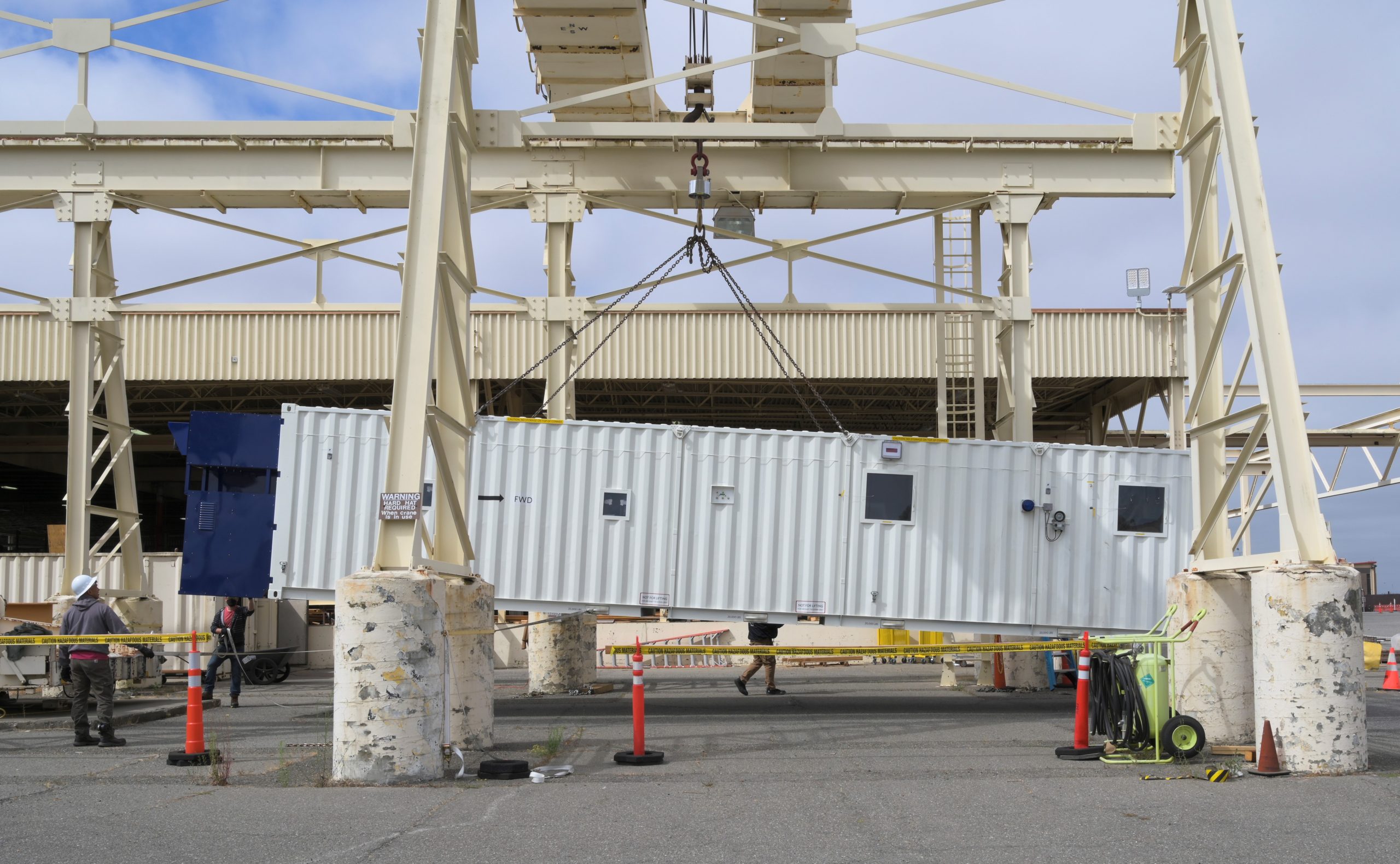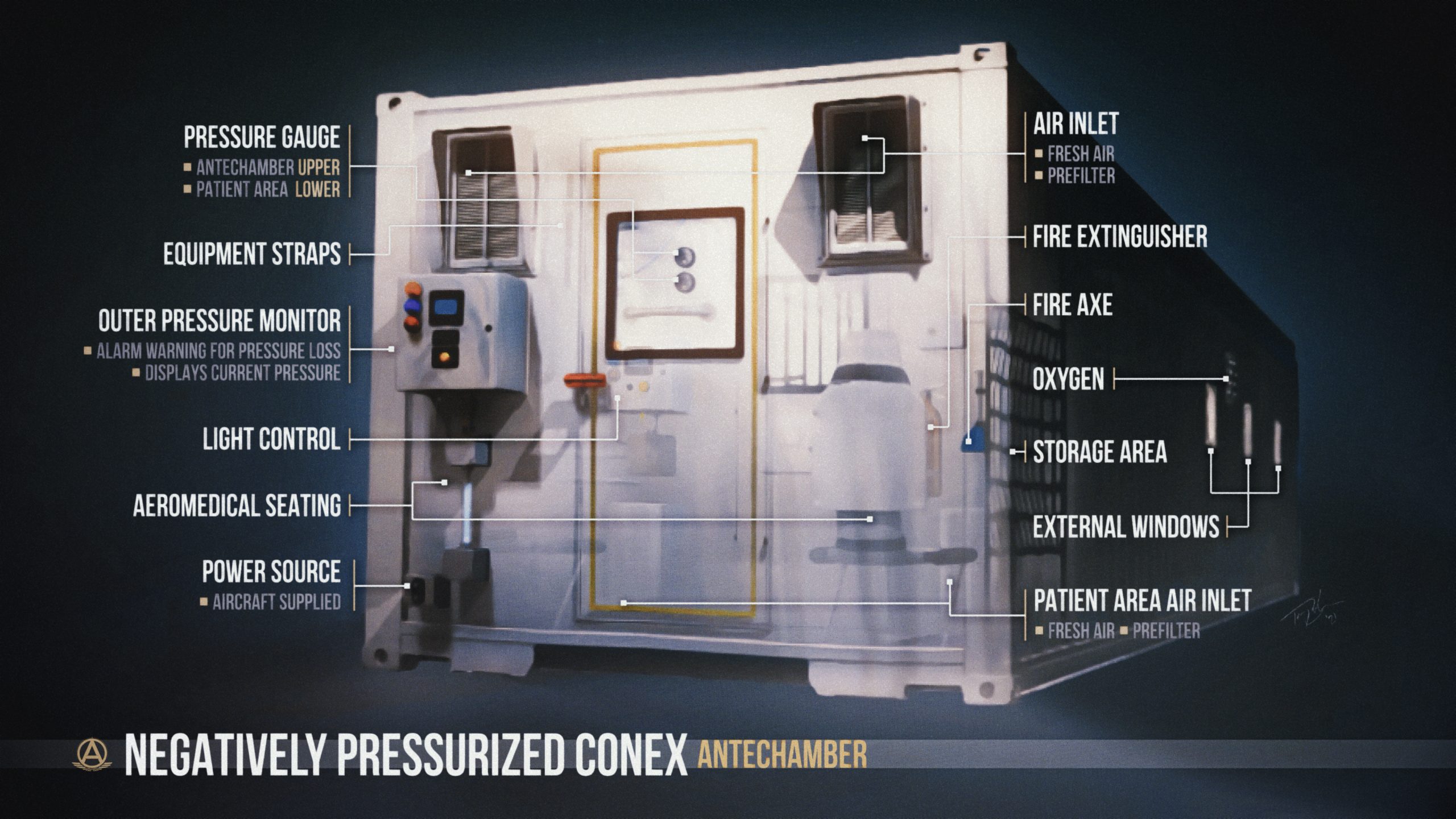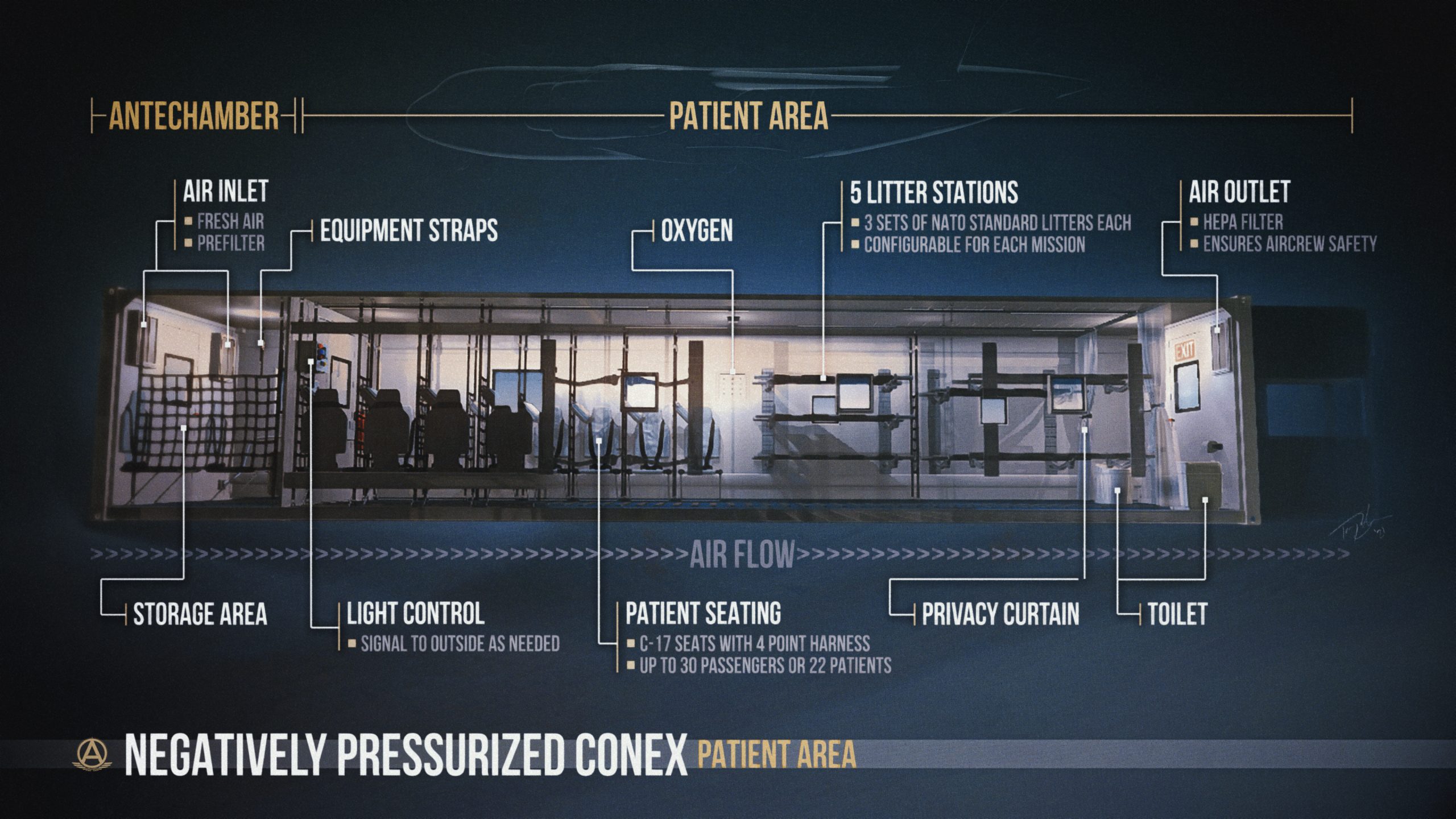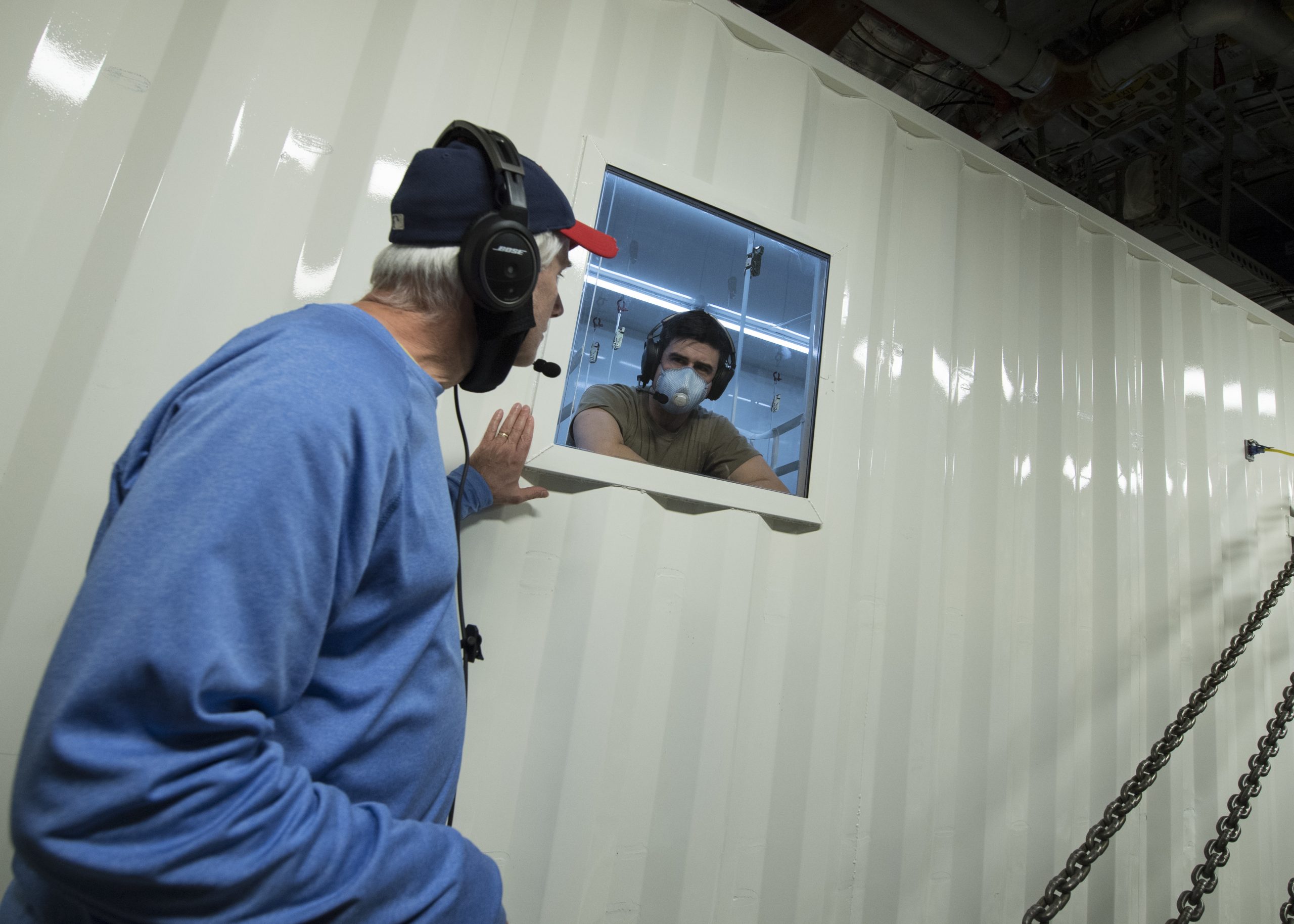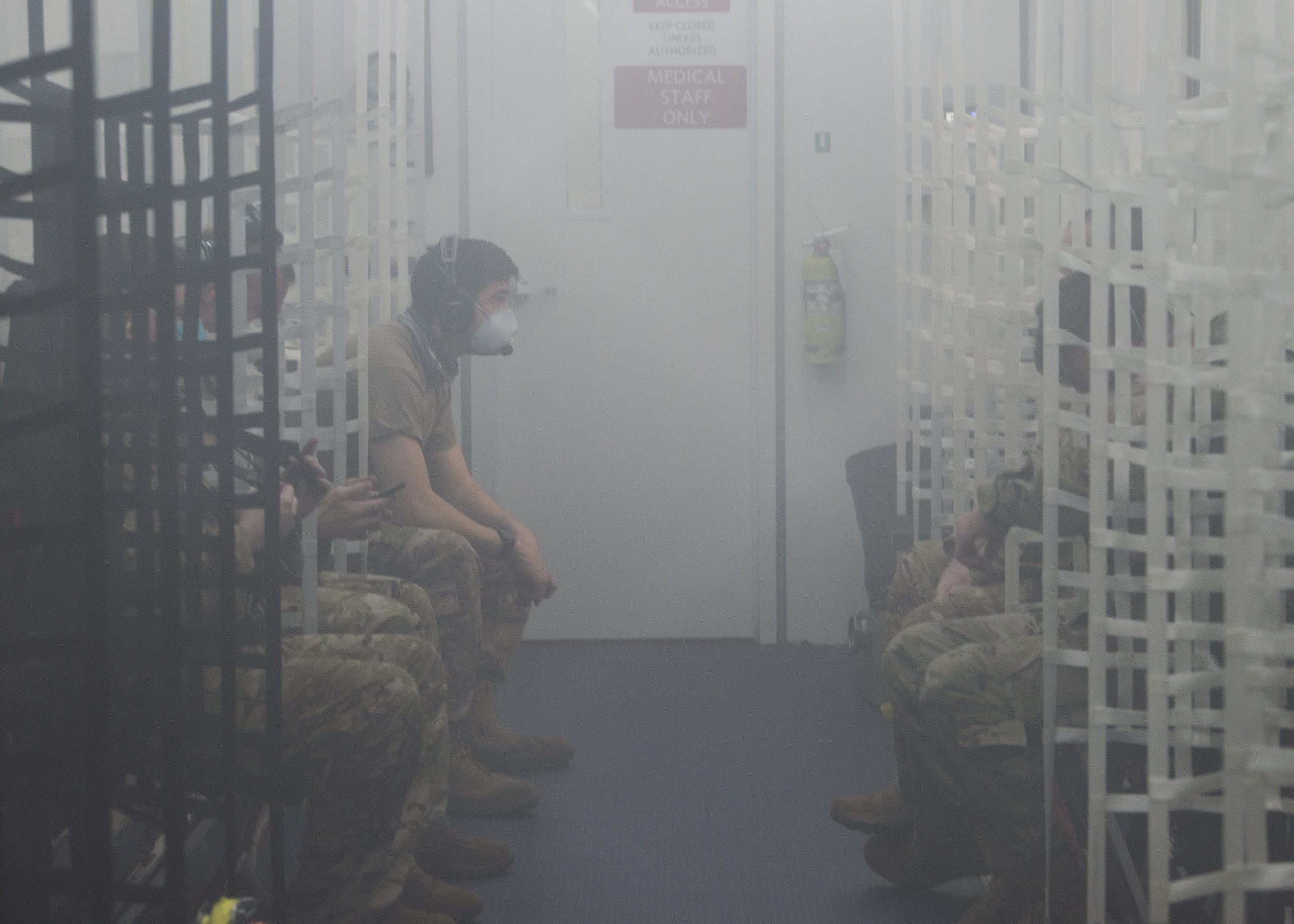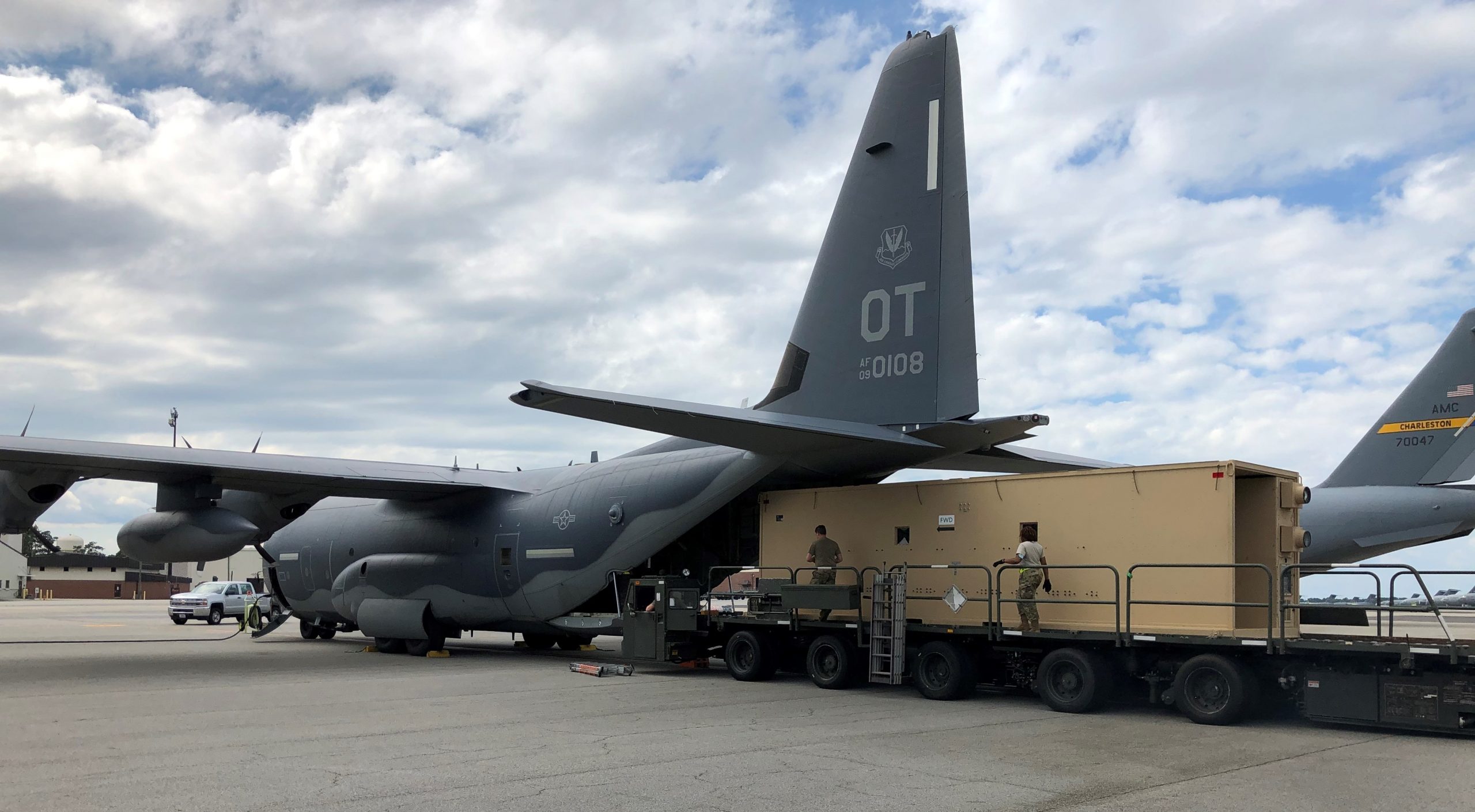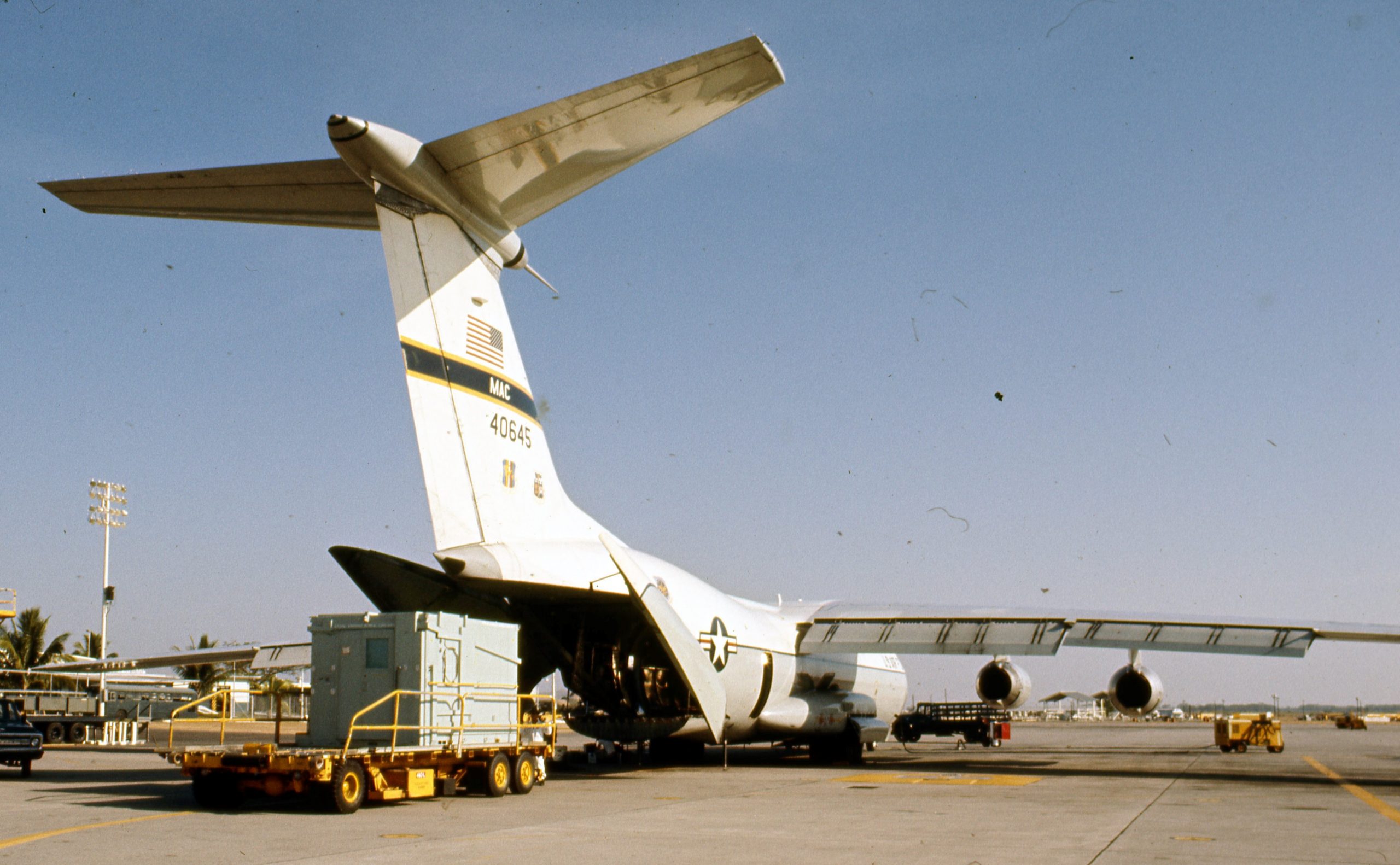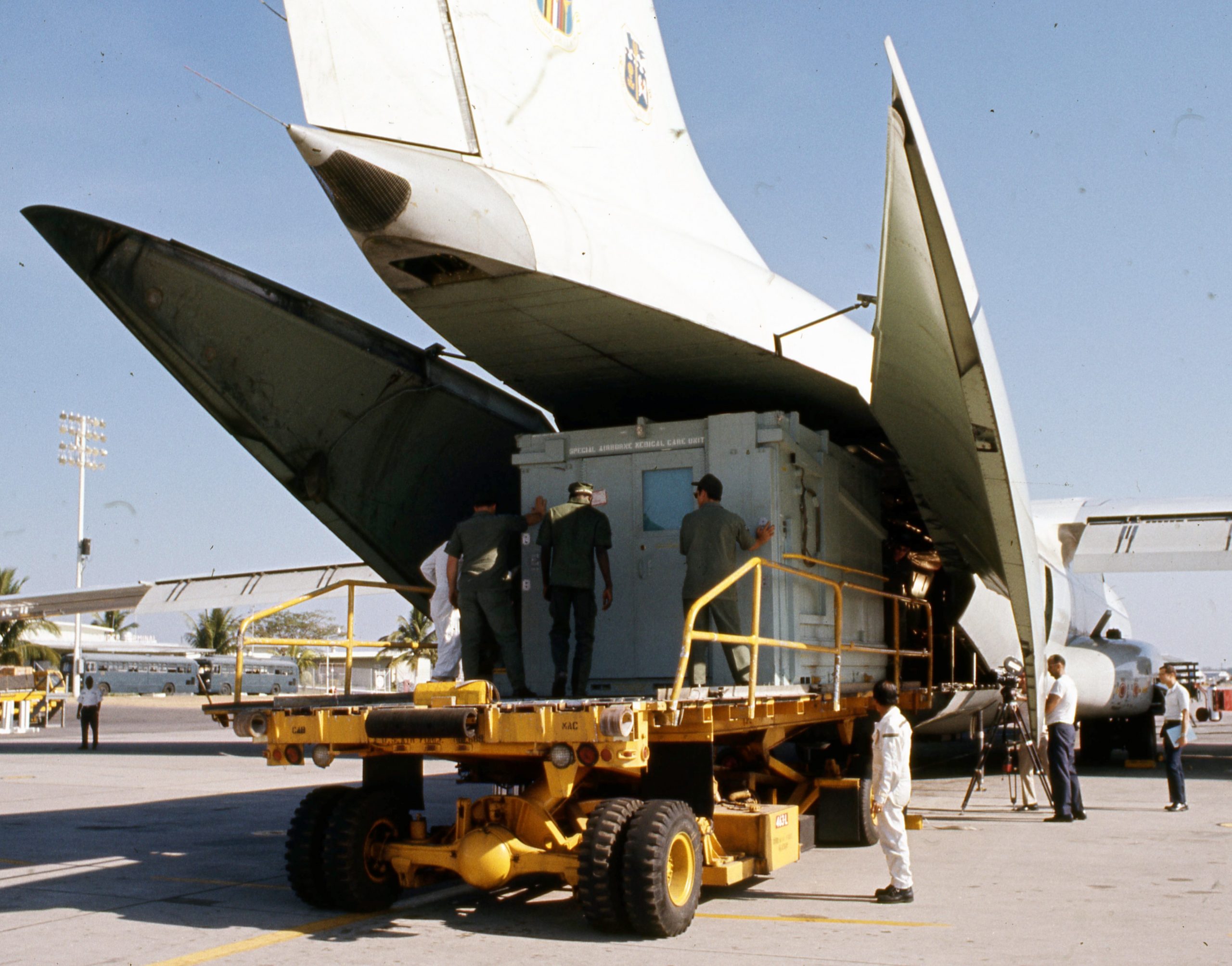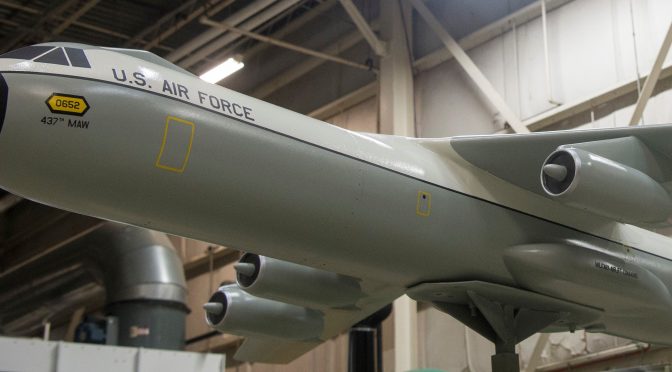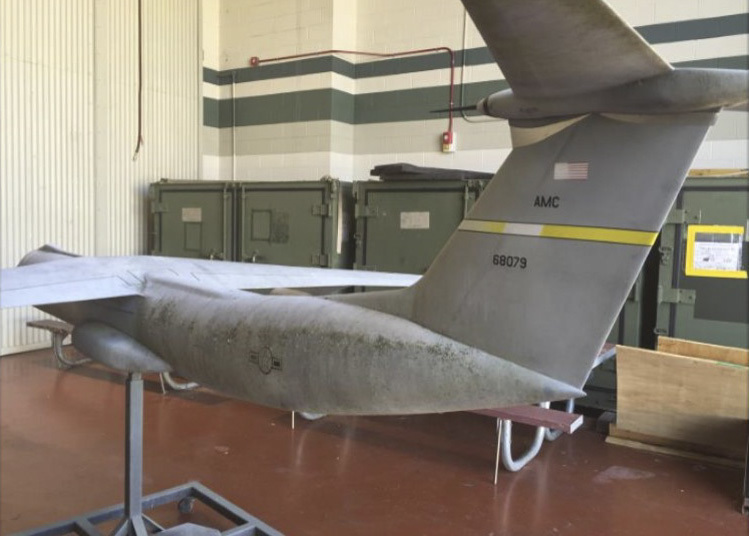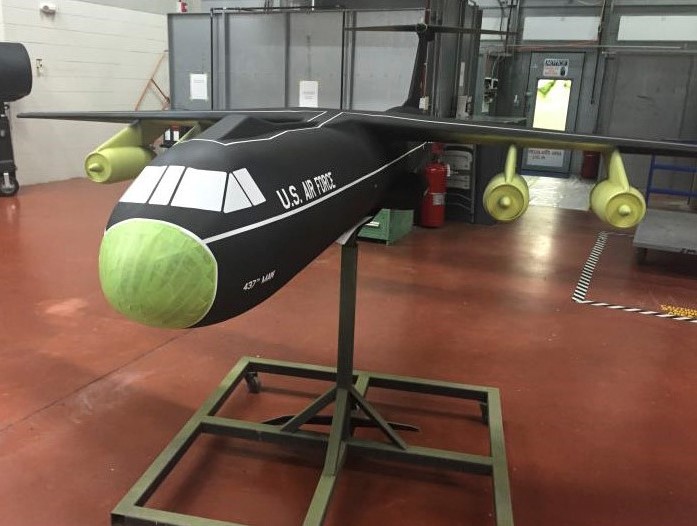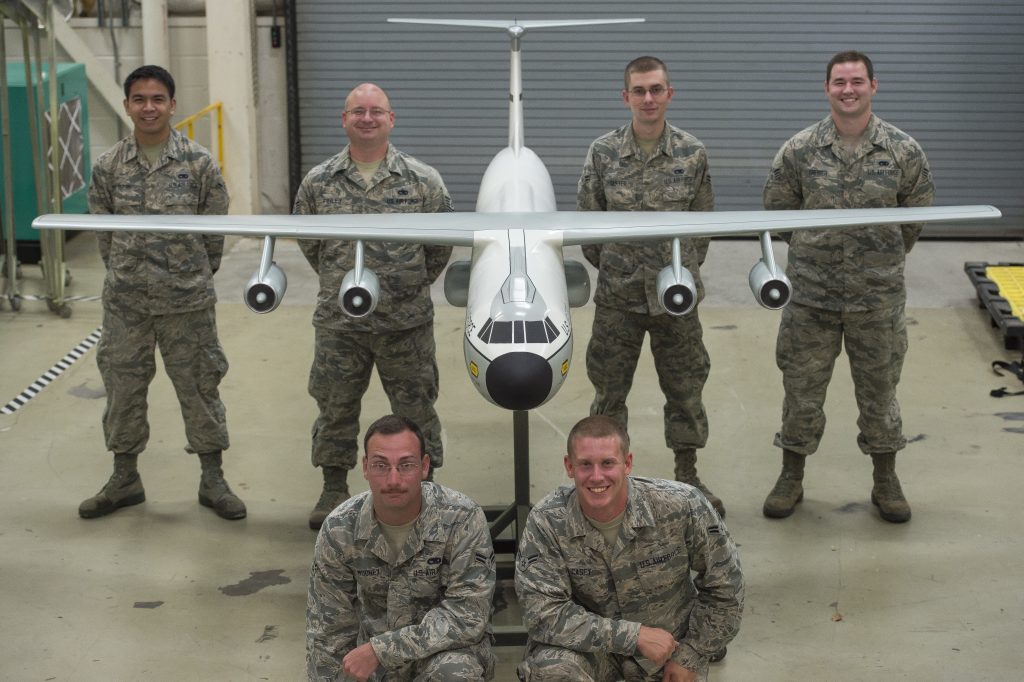Lockheed’s fast transport C-141 was designed according to Cold War requirements in 1960, and first flew in 1963. It was the world’s first turbofan powered military transport aircraft: “The C-141 has a noble record of achievement in its support of the U.S. military. Participating in every military operation from Vietnam to Iraqi Freedom, StarLifter crews have also performed humanitarian relief flights to nearly 70 countries on six continents. Most recently, the StarLifter served those affected by hurricanes Katrina and Rita. The aircraft has served NASA, conducted Antarctic resupply flights for nearly three decades and has been a key asset for flight research serving science for two decades.”-Ross Reynolds, Lockheed Martin vice president of Air Mobility
 California based C-141A ‘Golden Bear’ on Elmendorf Air Force Base (AFB), Alaska, shortly after April 1965 when the Starlifter became operational. This photo was probably made during Golden Bear’s promotional flight around the Pacific Rim, which was in May 1965. The Golden Bear was based on Travis AFB, California, and after 1977 it was upgraded to the stretched ‘B’ version. Golden Bear made its last flight in March 1996, after which it was abandoned on the flight-line. Since 2005, and after restoration, Golden Bear has been serving on ‘Gate Guard duty’ on Travis AFB. (more below)
California based C-141A ‘Golden Bear’ on Elmendorf Air Force Base (AFB), Alaska, shortly after April 1965 when the Starlifter became operational. This photo was probably made during Golden Bear’s promotional flight around the Pacific Rim, which was in May 1965. The Golden Bear was based on Travis AFB, California, and after 1977 it was upgraded to the stretched ‘B’ version. Golden Bear made its last flight in March 1996, after which it was abandoned on the flight-line. Since 2005, and after restoration, Golden Bear has been serving on ‘Gate Guard duty’ on Travis AFB. (more below)
USAF photo from July 1966, Military Air Transport Service (MATS) C-141A (short) on Tan Son Nhut Airbase, Viet Nam.
Quick silent film, by somebody with last name of Anderson, of iconic comedian Bob Hope arriving in Korea, via a C-141A, for one of his famous USO Christmas shows, 27DEC1970:
C-141As loaded with former prisoners of war (PoW), leaving Viet Nam for the United States, March 1973.
Silent U.S. Army film, by somebody with the last name of Fraser, showing soldiers with The Big Red One (1st Infantry Division) boarding C-141As outbound for wargame ReForGer (Return of Forces to Germany) in West Germany, October 1973 (with some film of USAF cargo ops tacked on at the end, obviously filmed during warmer months):
Silent U.S. Navy film, by Todd Thompson, showing the arrival of a C-141A on U.S. Naval Air Station Cubi Point, Philippines, to pick-up refugees from Viet Nam and fly them to the United States, 29APR1975:
It was quickly realized that the C-141A had enough power to transport far more than what could be crammed into its slim cargo hold. It was decided to stretch the fuselage by 23 feet, creating the YC-141B.
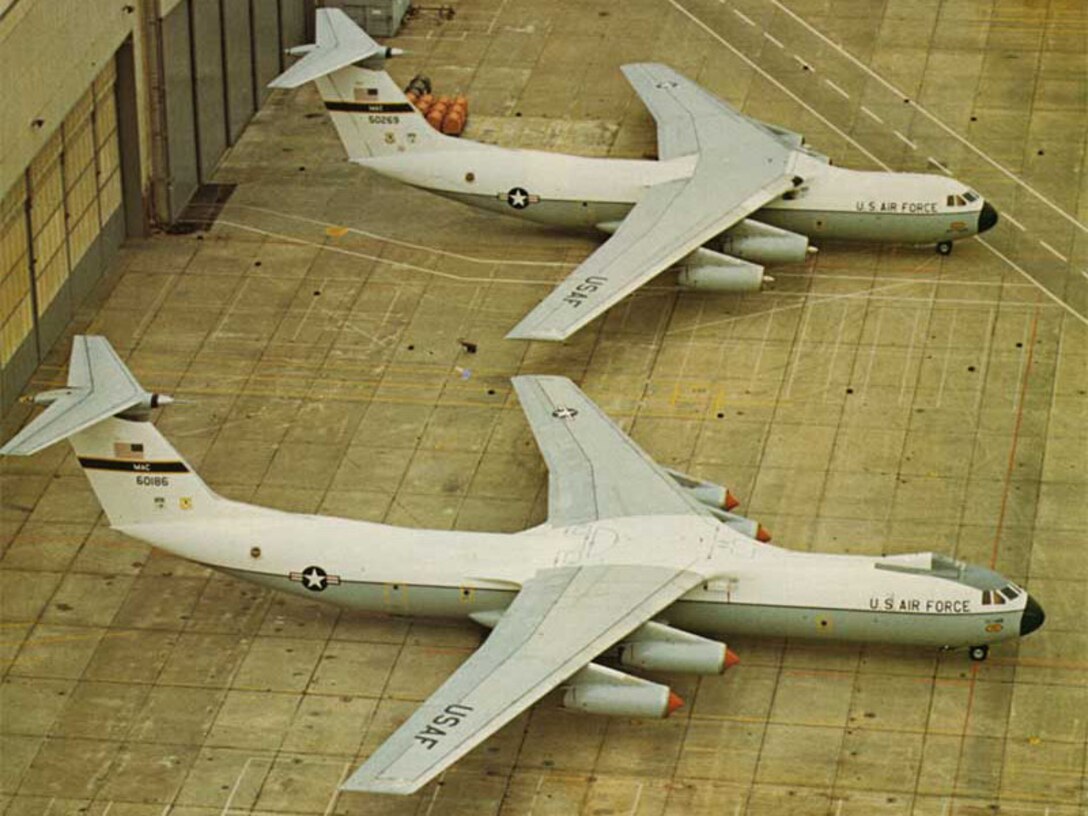
From the Edwards Air Force Base (AFB) Photo Shop, YC-141B aerial refueling test over the Mojave Desert, California, Spring 1977.
Production C-141Bs were actually stretched C-141As. According to historians at Kirtland AFB, New Mexico, stretching 270 C-141As to C-141B standard was cheaper than buying 90 new build C-141Bs!
The stretching of 270 C-141As took place from 1977 to 1982, first deliveries began in 1979.
 In this photo you can see the unpainted fuselage ‘plug’ used to extend the C-141As into C-141Bs, as well as the aerial refueling sections.
In this photo you can see the unpainted fuselage ‘plug’ used to extend the C-141As into C-141Bs, as well as the aerial refueling sections.
C-141A still in use, Norton AFB, California, July 1980.
Fans of the movie The Thing, yes there is a McMurdo Station, and C-141As went there, in 1980, as part of Operation Deep Freeze.
Sometime in the early to mid 1980s, a C-141B leaves Travis AFB, California.
During the U.S. invasion of Grenada (aka Operation Urgent Fury) in October 1983, C-141s not only brought in ground troops, but took out U.S. citizens who were taking college courses on the island.
Also in October 1983, the U.S. Marine Corps barracks in Beirut, Lebanon, was blown-up by a suicide bomber driving a truck full of explosives. C-141s also acted as flying hospitals, flying wounded Marines back to Rhein-Main Air Base, Germany.
 NASA (National Aeronautics Space Administration) modified a C-141A into an airborne space observation vehicle in 1975. It was known as KAO (Kuiper Airborne Observatory) and ceased operations in 1995.
NASA (National Aeronautics Space Administration) modified a C-141A into an airborne space observation vehicle in 1975. It was known as KAO (Kuiper Airborne Observatory) and ceased operations in 1995.
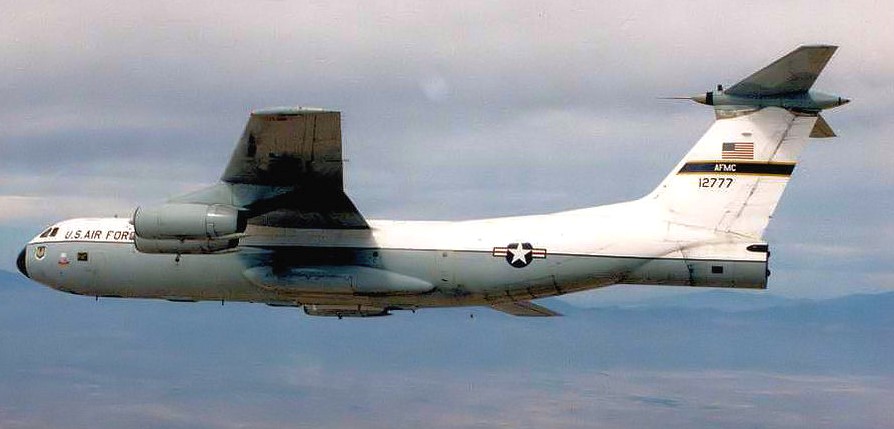 Whatever happened to the N(for NASA)C-141A #12777 ‘The Gambler’, a test aircraft for experimental ECM equipment destined for the B-1B and B-2 bombers? (click here and find out the ugly truth)
Whatever happened to the N(for NASA)C-141A #12777 ‘The Gambler’, a test aircraft for experimental ECM equipment destined for the B-1B and B-2 bombers? (click here and find out the ugly truth)
In 1986, climate problems caused a hay shortage for farmers in the Southeastern U.S. C-141s were used to transport 170 tons of hay from the Mid-Western states, in just one day of Operation Haylift. This video shows President Ronald Reagan kicking-off the first day of Op Haylift, 24JUL1986:
Oops, a C-141B ran off the runway on Marine Corp Air Station Iwakuni, Japan, sometime in Summer(?) 1987.
February 1991, Operation Desert Storm. U.S. military personnel pass by a Military Airlift Command (MAC) C-141B (C-5 Galaxy in the background) somewhere (“undisclosed location”) on the Arabian Peninsula. According to McChord Air Museum, Washington, during Operations Desert Shield-Desert Storm USAF C-141s were landing every 10 minutes, 24 hours a day, for 7 months in Saudi Arabia.
Video from March Field Air Museum, C-141B airdrop over California:
Operation Restore Hope; President George H.W. Bush (center, wearing Marine Corps cap) in front of C-141 Starlifter in Mogadishu, Somalia.
Operation Restore Hope gave birth to the phrase Black Hawk Down (also inspiring the Ridley Scott movie of the same name).
In May 1993, a USAF F-16 crash landed and then plowed into a parked C-141B, on Pope AFB, North Carolina. C-141 Lifetime Mishap Summary has data and photos of dozens of accidents, crashes and ‘mishaps’ involving C-141s.
Two M113 Personnel Carriers are loaded into a C-141B, on Rhein-Main Air Base, Germany, for deployment to Uganda for United Nations ‘peacekeeping’ duty, 22JUN1994.
C-141B delivers humanitarian aid to Rwanda refugees in Zaire, August 1994.

In December 1997 a C-141A was used by NASA to tow a QF-106 to high altitude before release, to test the feasibility of similar launching of future space vehicles. It was called Project Eclipse. C-141A #12775 is now at the Air Mobility Command Museum.
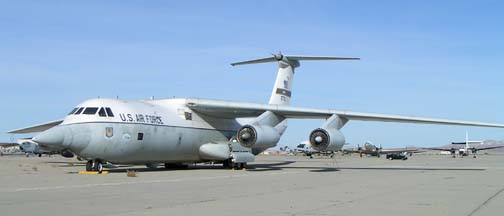 NC-141A #12779 with ‘universal radar nose’, wasting away on the Air Force Flight Test Center Museum’s South Base flightline, in California.
NC-141A #12779 with ‘universal radar nose’, wasting away on the Air Force Flight Test Center Museum’s South Base flightline, in California.
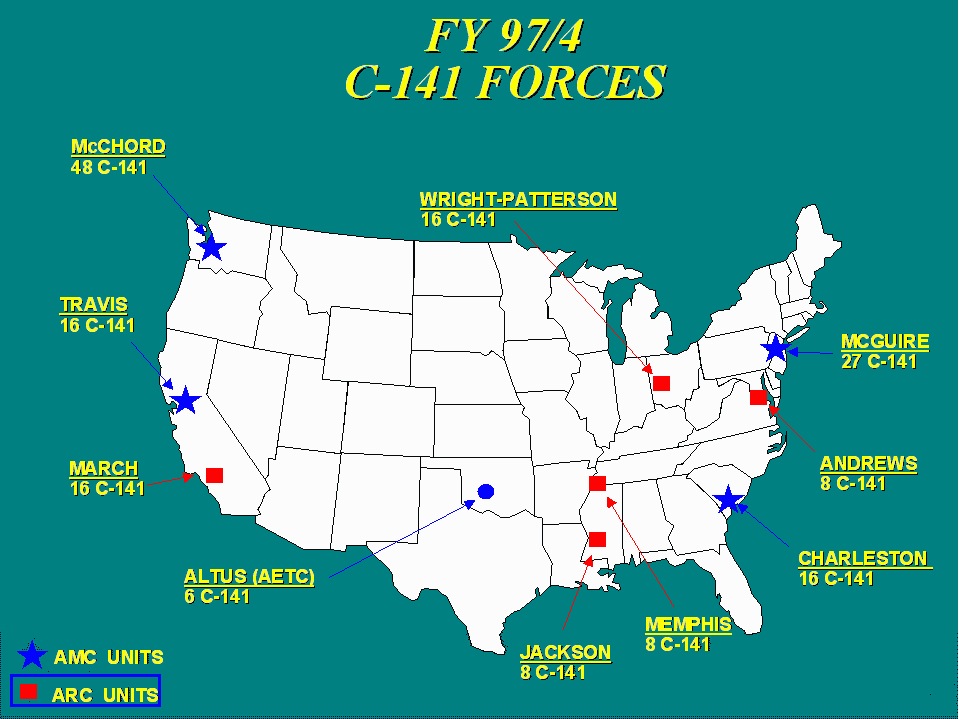
Upgraded ‘glass cockpit’ of a C-141C, September 2000, during a ‘Project Trans-Am’ mission.
A Tennessee Air National Guard C-141 gets loaded with war gear on U.S. Naval Air Station Sigonella, in NATO Italy, for the start of the undeclared War on Terror (Operation Enduring Freedom), October 2001.
Hurricane Rita final hours of an air evacuation from the Southeast Texas Regional Airport, onboard a Wright-Patterson Air Force Base, Ohio, Starlifter.

The YC-141B recently underwent intensive restoration in Georgia. Click here to see the effort and results.
Video report by Airman First Class Kahdija Slaughter, January 2015. Preserving the Starlifter Gate Guard at Joint Base Charleston, South Carolina:
Kelsey Schmidt, Miss Washington 2016, rechristens ‘gate guard’ Tacoma Starlifter, (#65-0277) on Heritage Hill, Joint Base Lewis-McChord (click here to see Sandra Marth, Miss Washington 1966, christen Tacoma Starlifter the first time). Tacoma Starlifter first arrived on Lewis-McChord in August 1966 and took part in 1973’s Operation Homecoming, bringing Prisoners of War (PoW) back home to the U.S. from Viet Nam. The last C-141 stationed on Lewis-McChord was retired in April 2002.
Airman conduct weekly inspections of ‘gate guards’, like The Garden State Starlifter, on Joint Base McGuire-Dix-Lakehurst, New Jersey.
Video report by Staff Sergeant John Ayre, April 2015, 50th anniversary of Golden Bear:
‘War on Terror’ veteran Brandon Jones and his service dog, Apache, pose in front of Golden Bear on Travis Air Force Base, California.
Video report by Kenneth Wright, October 2018. History of the C-141 from the viewpoint of the personnel of the 349th Air Mobility Wing (formerly Military Airlift Wing), U.S. Air Force Reserve on Travis AFB, California:
In September 2004 the last of the U.S. Air Force active duty C-141s retired, with Guard and Reserve C-141s operating until May 2006. The Lockheed C141 Starlifter was retired in favor of the upgraded Lockheed C-5 Galaxy. Starlifters were also replaced with the Boeing C-17 Globmaster-3.
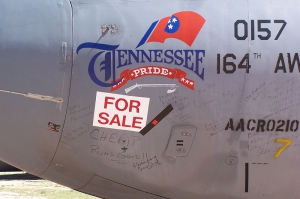
Most C-141s were reportedly scrapped at AMARG (Aerospace Maintenance Regeneration Group) in Arizona. At least they took some pics of C-141 nose art.
Kit Bashing: WORLD’S LARGEST C-141B STARLIFTER MODEL?
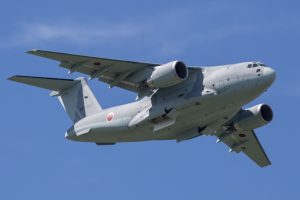 Vehicle I-D: KAWASAKI C-2
Vehicle I-D: KAWASAKI C-2
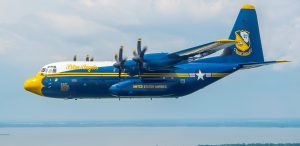 C-130J: ONCE A RED COAT, NOW A BLUE ANGEL
C-130J: ONCE A RED COAT, NOW A BLUE ANGEL
